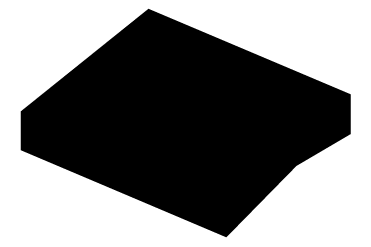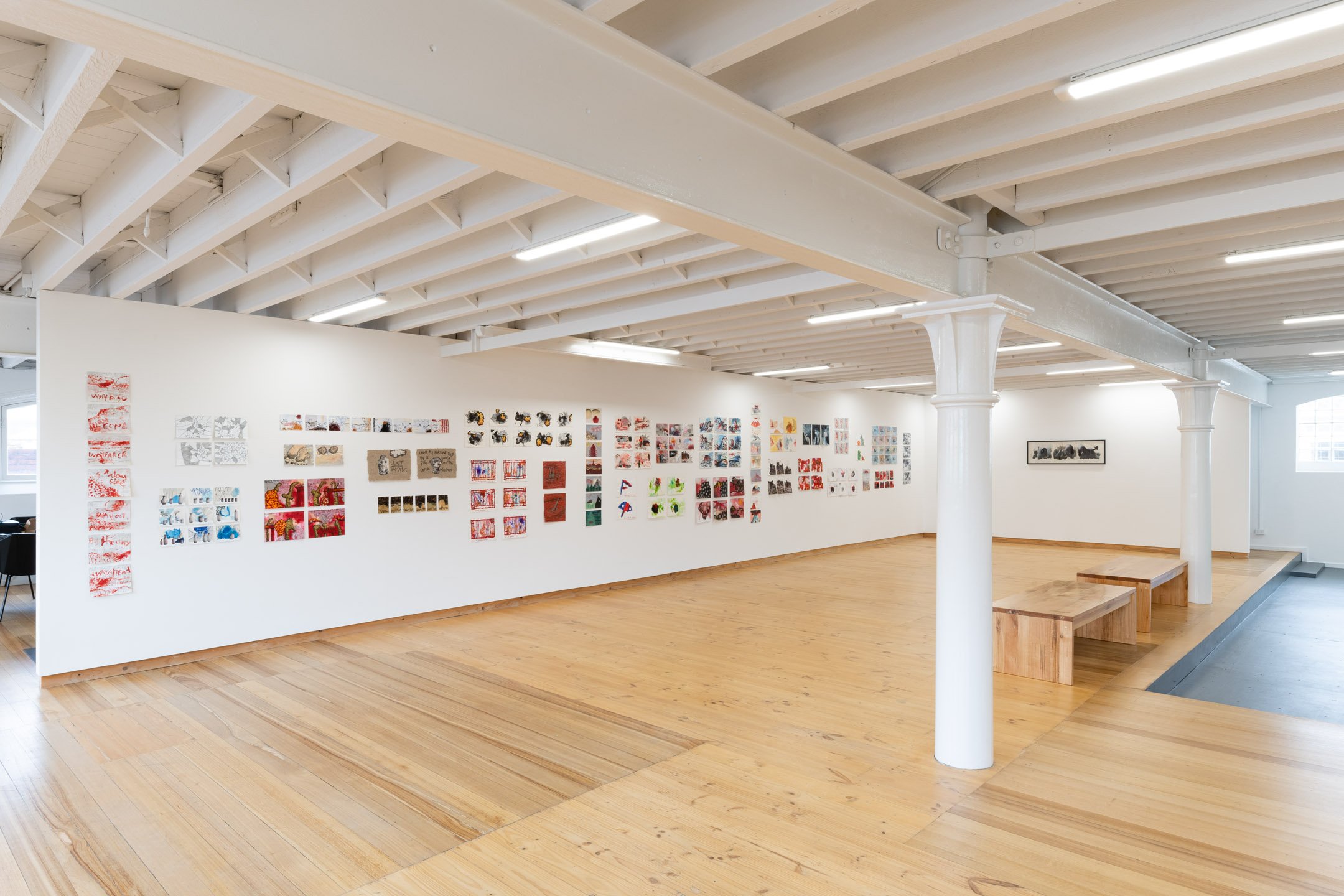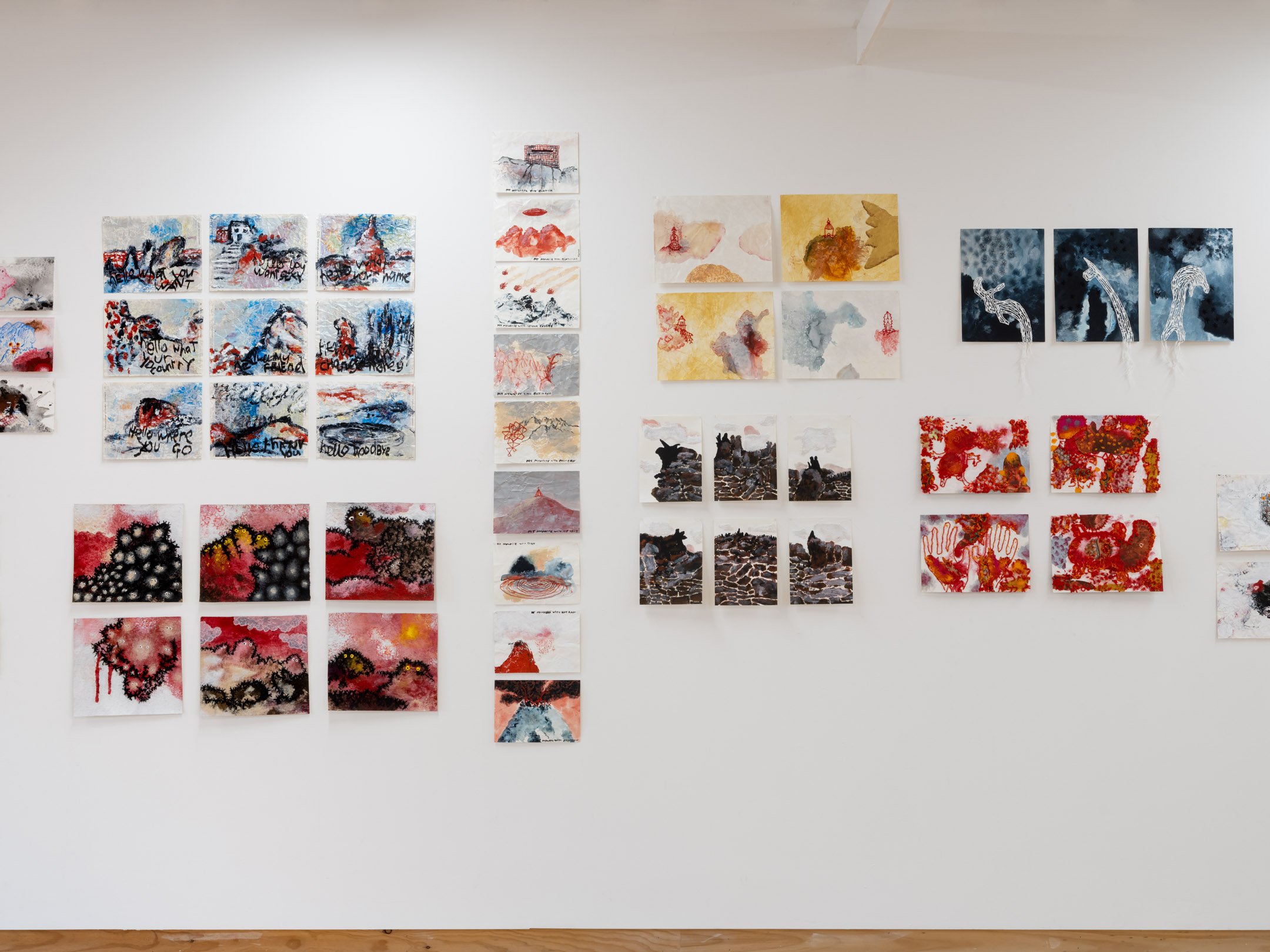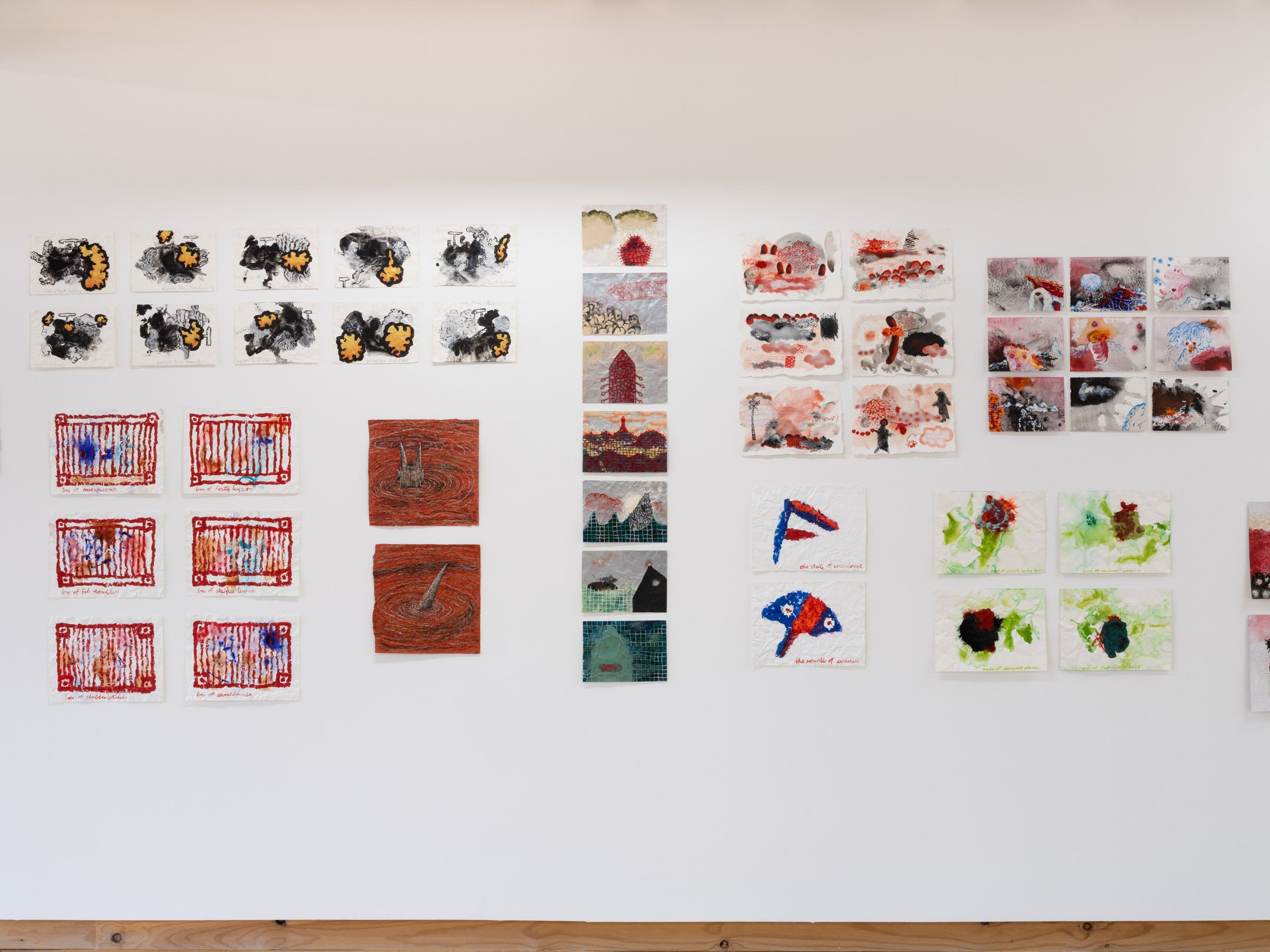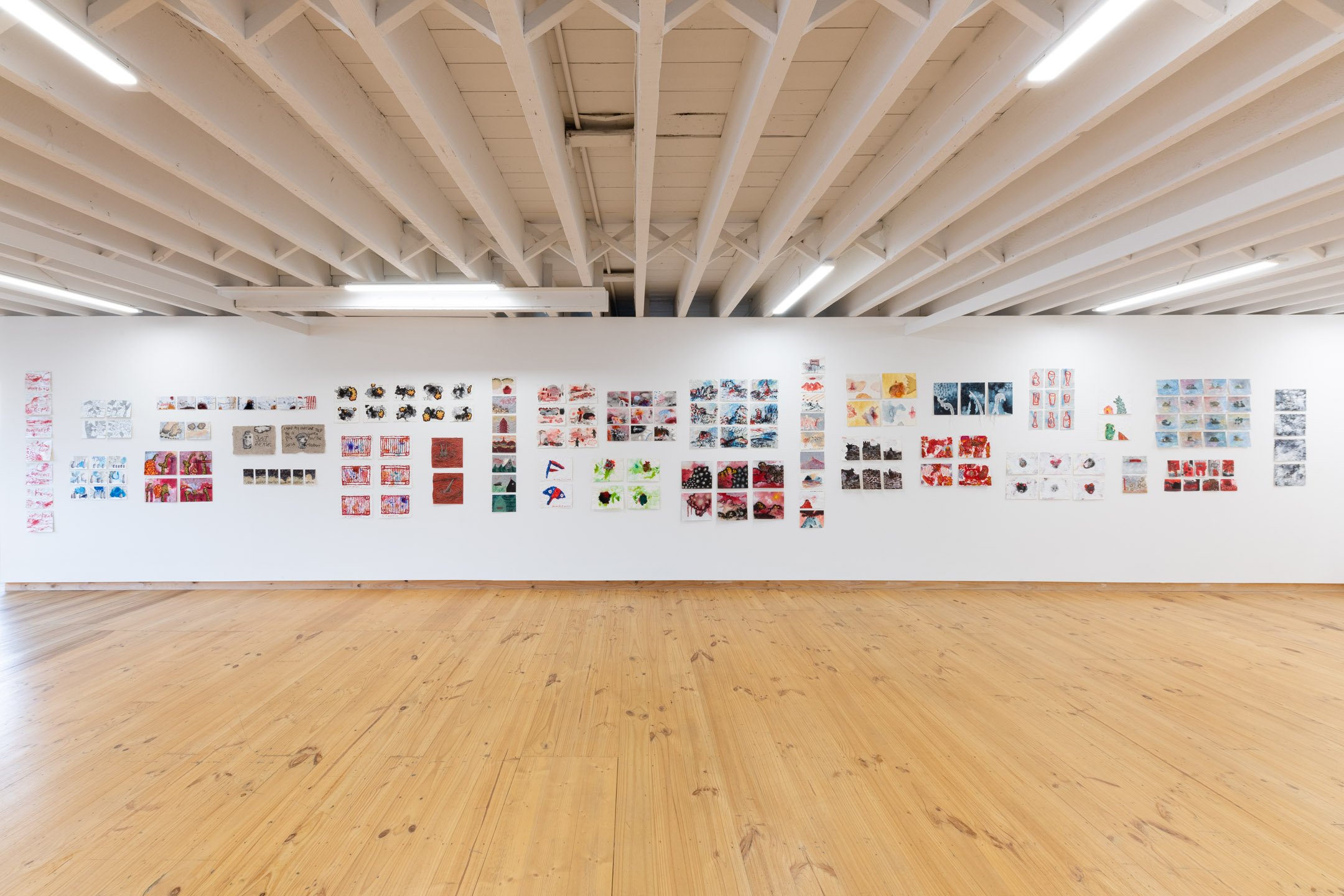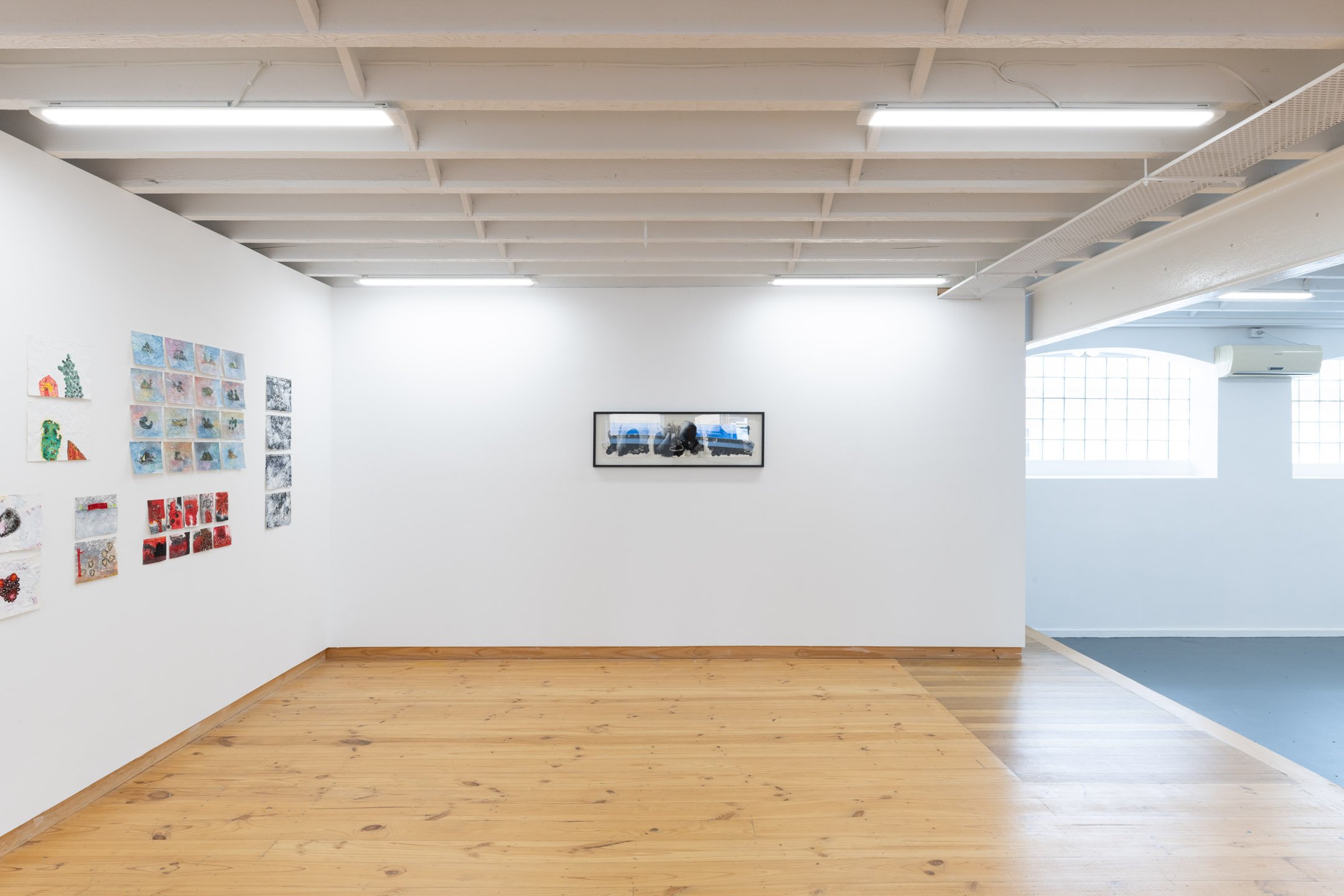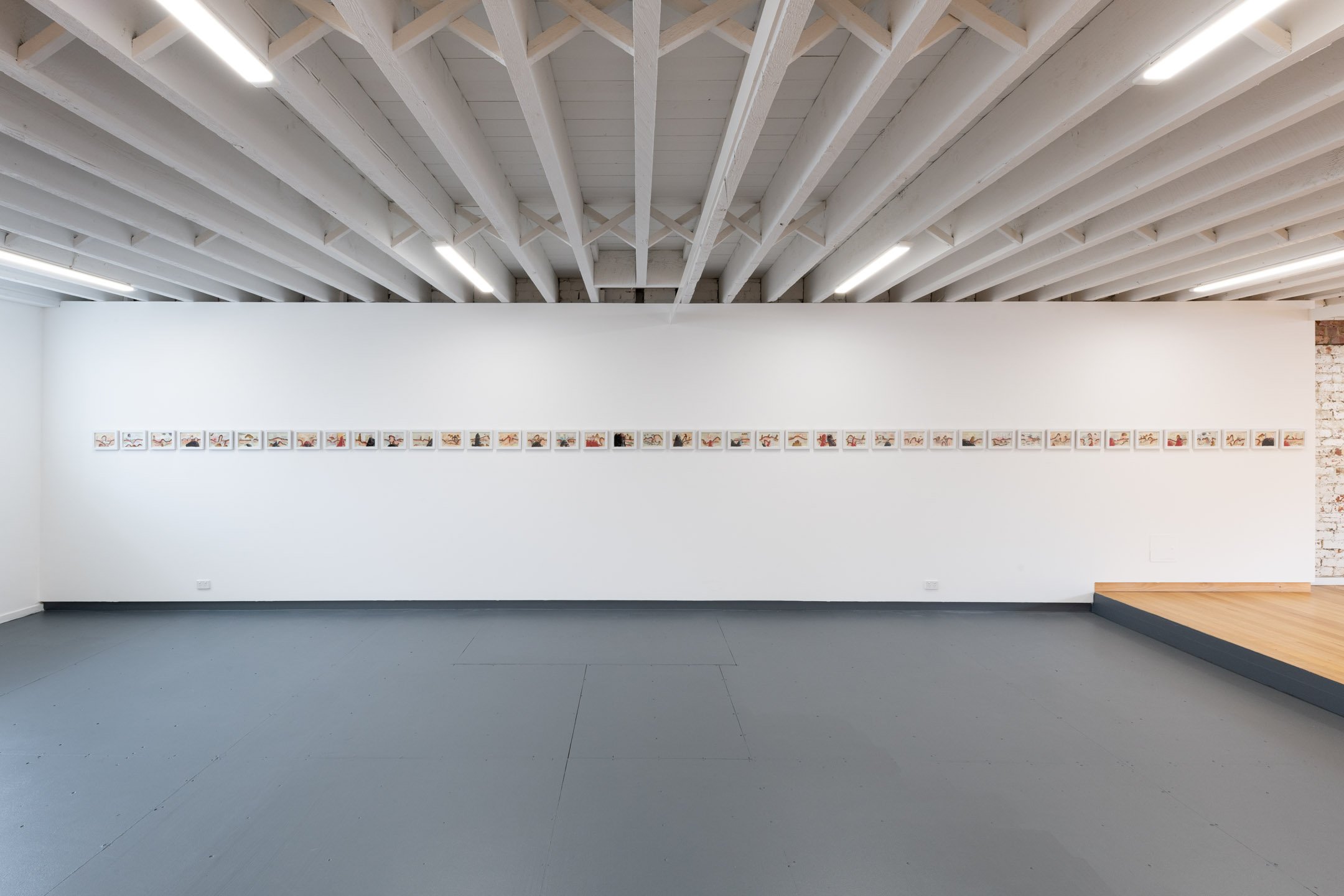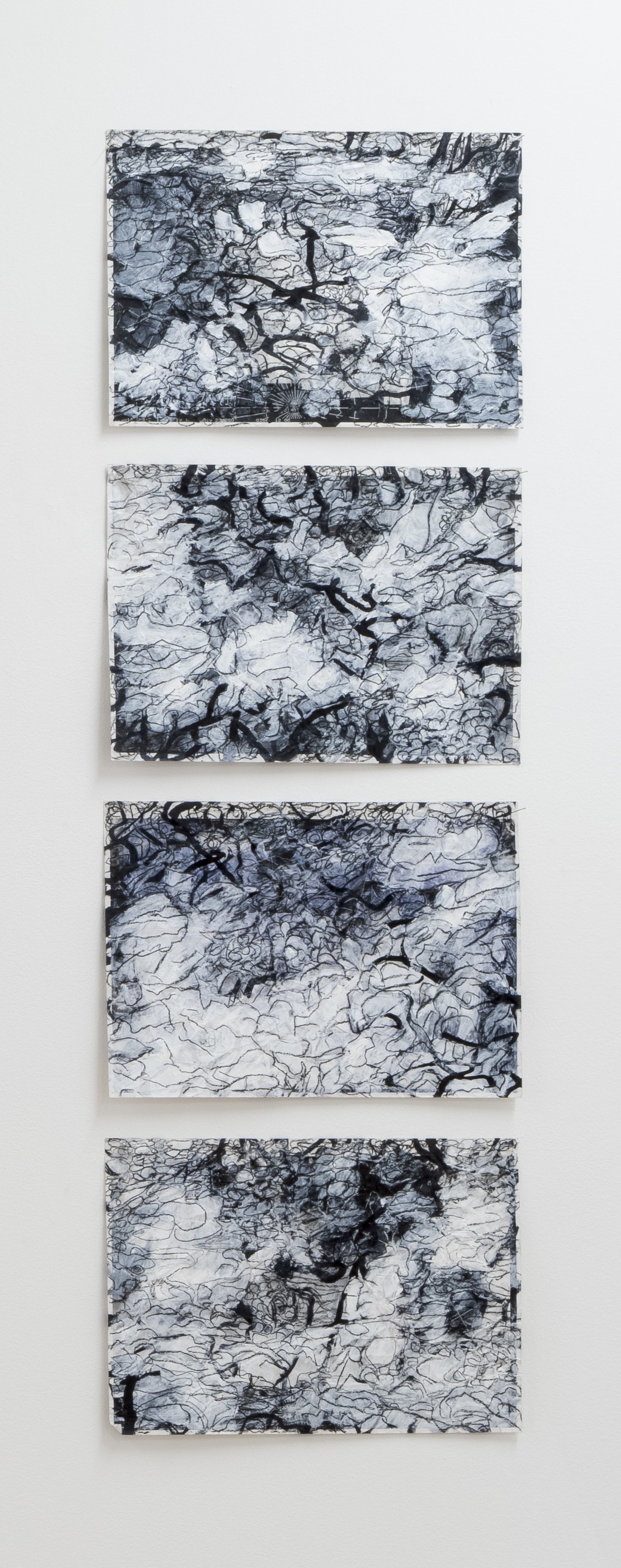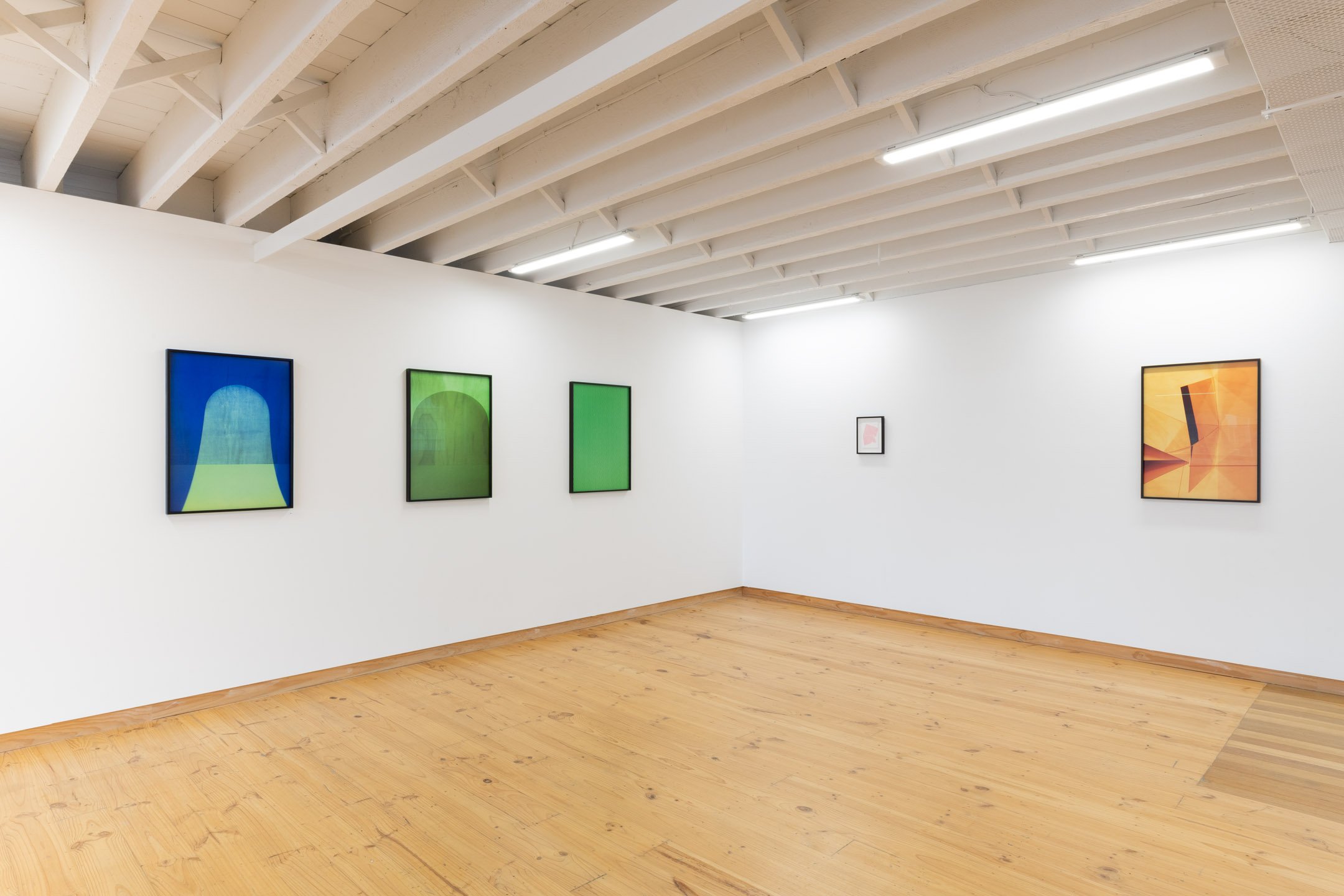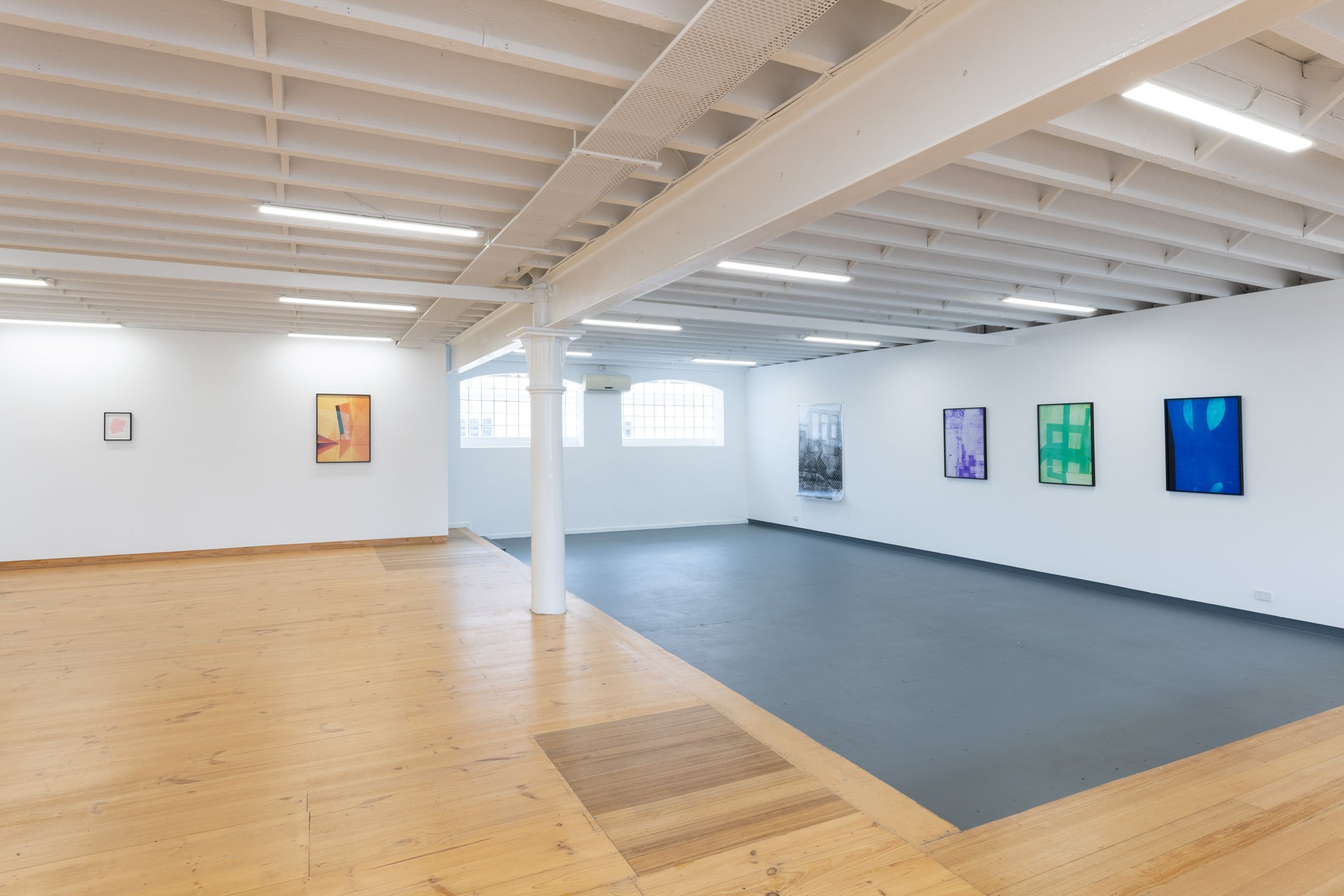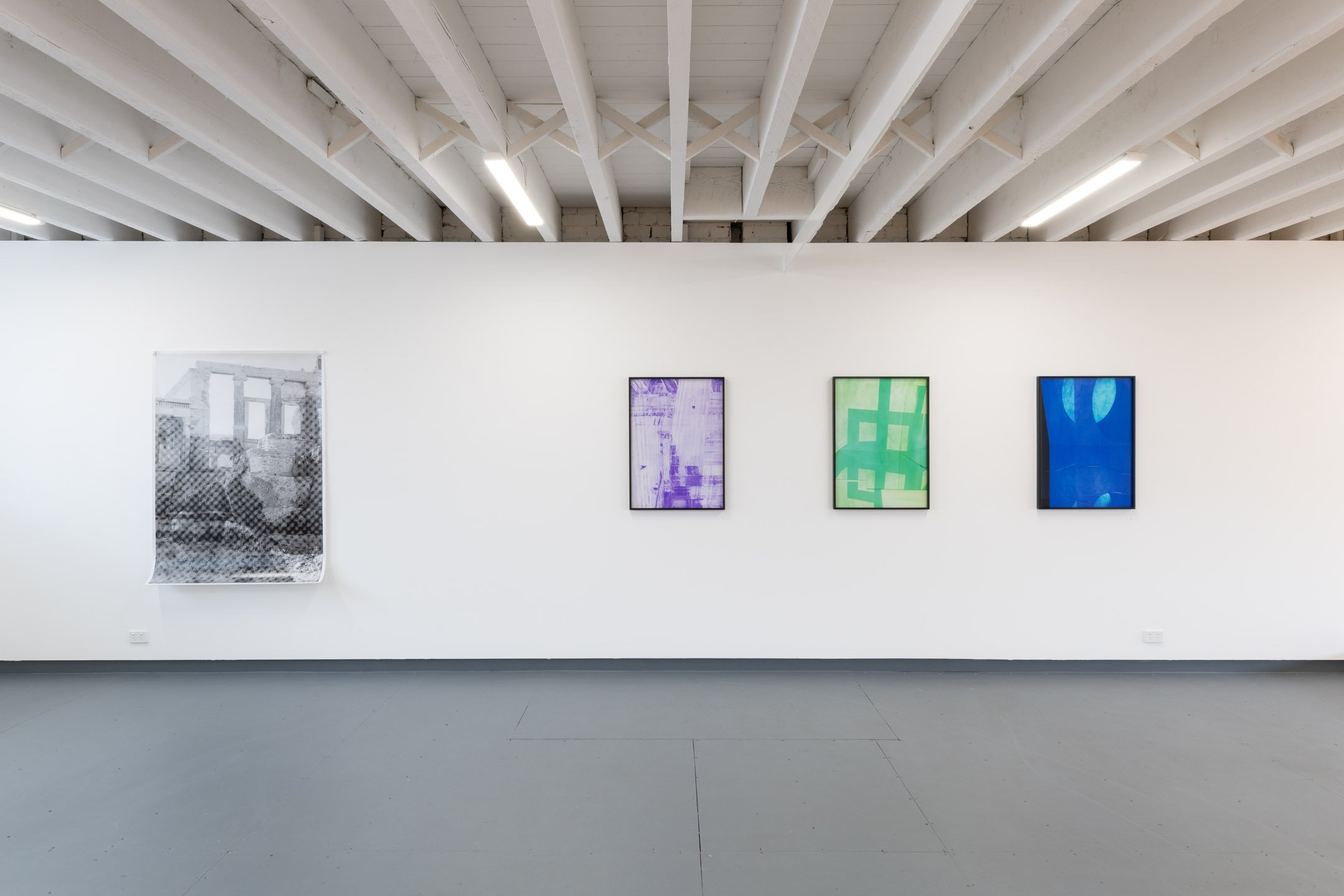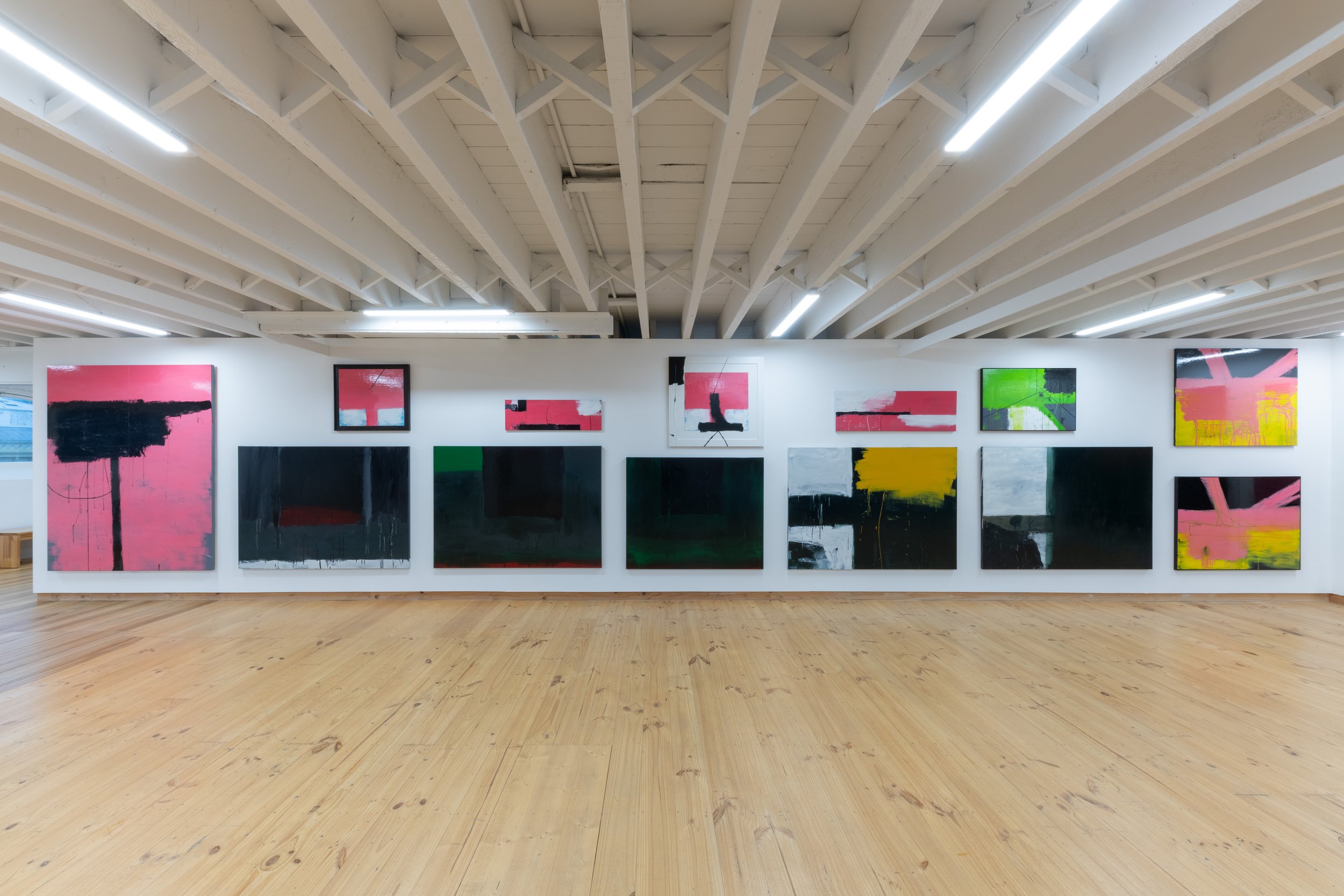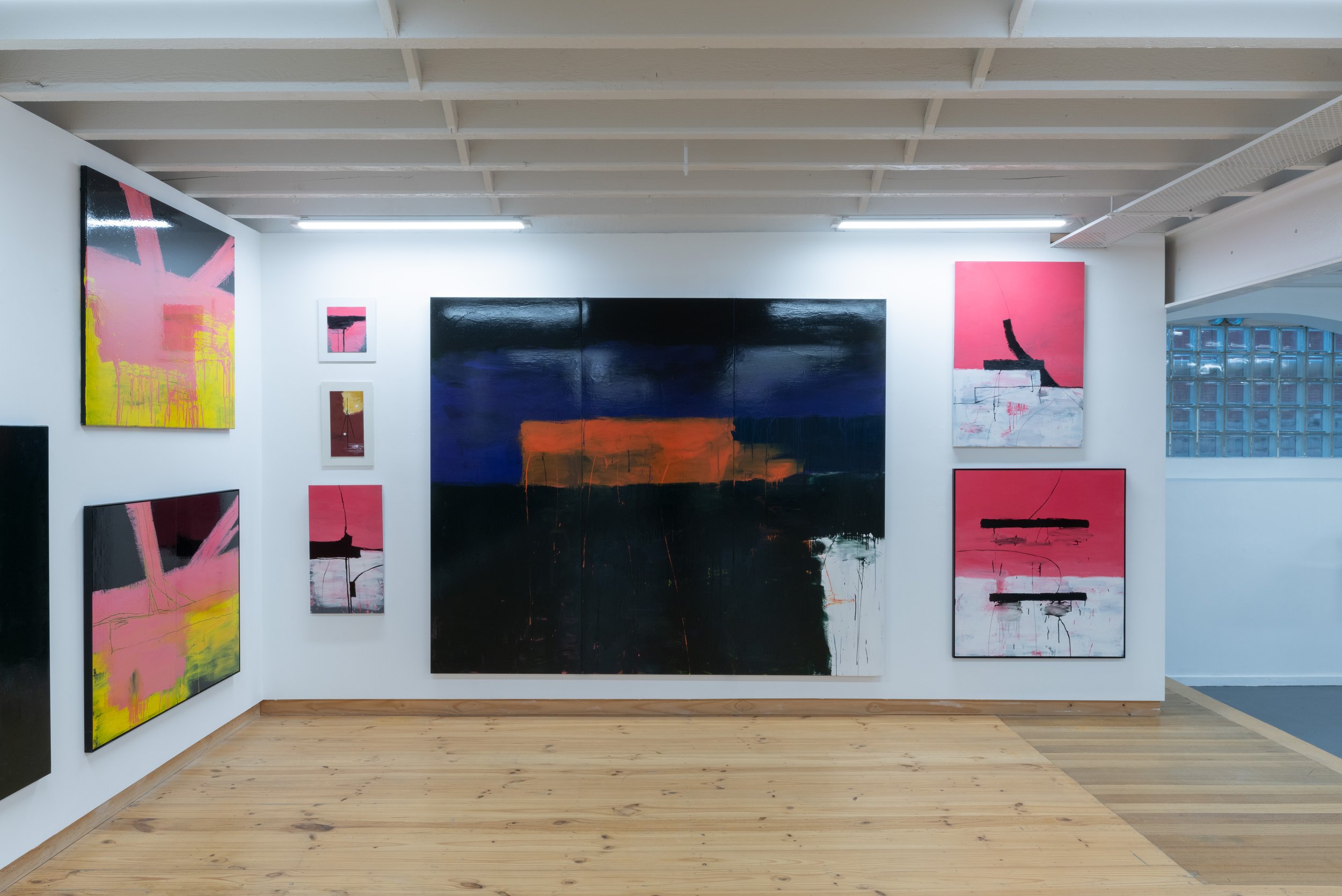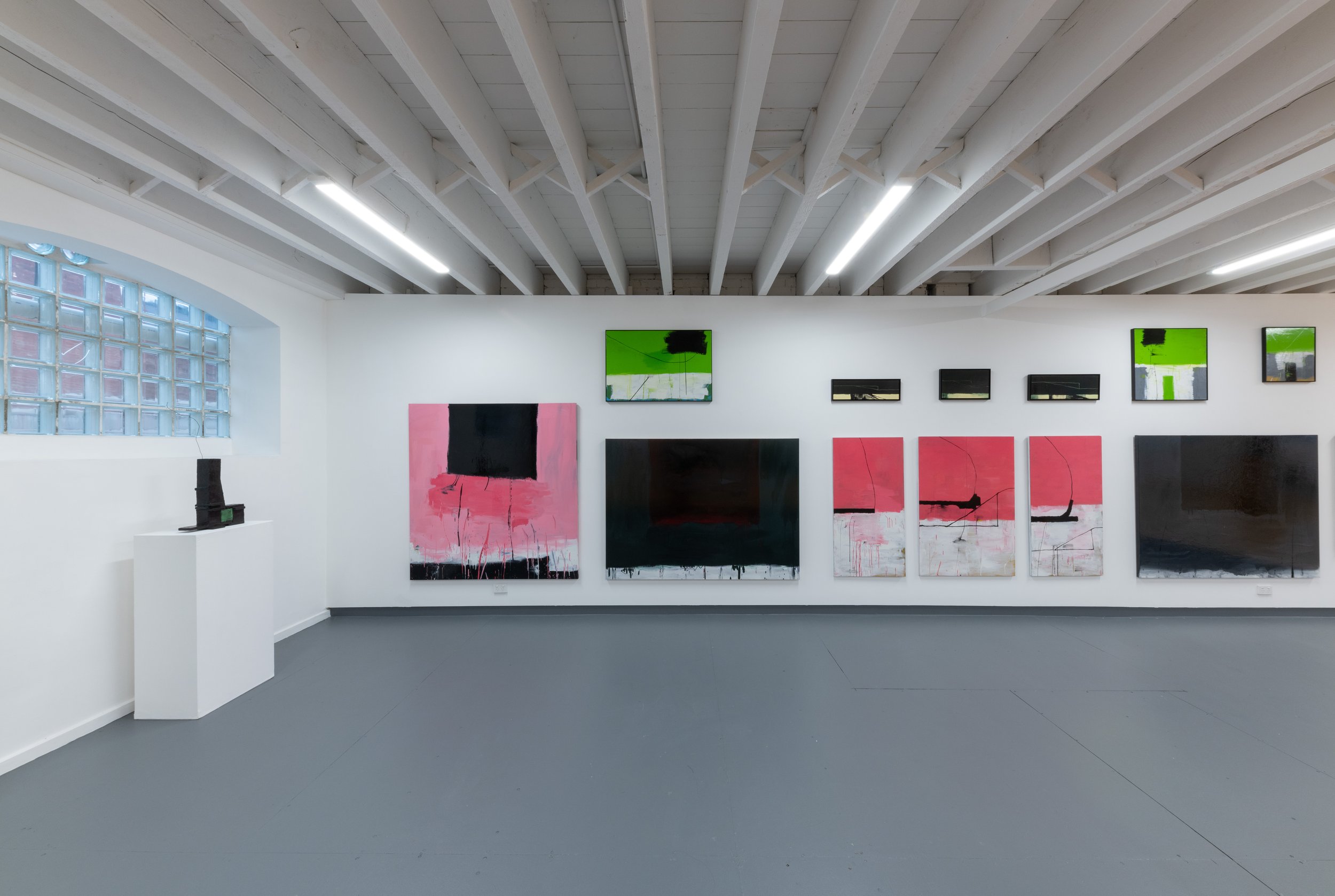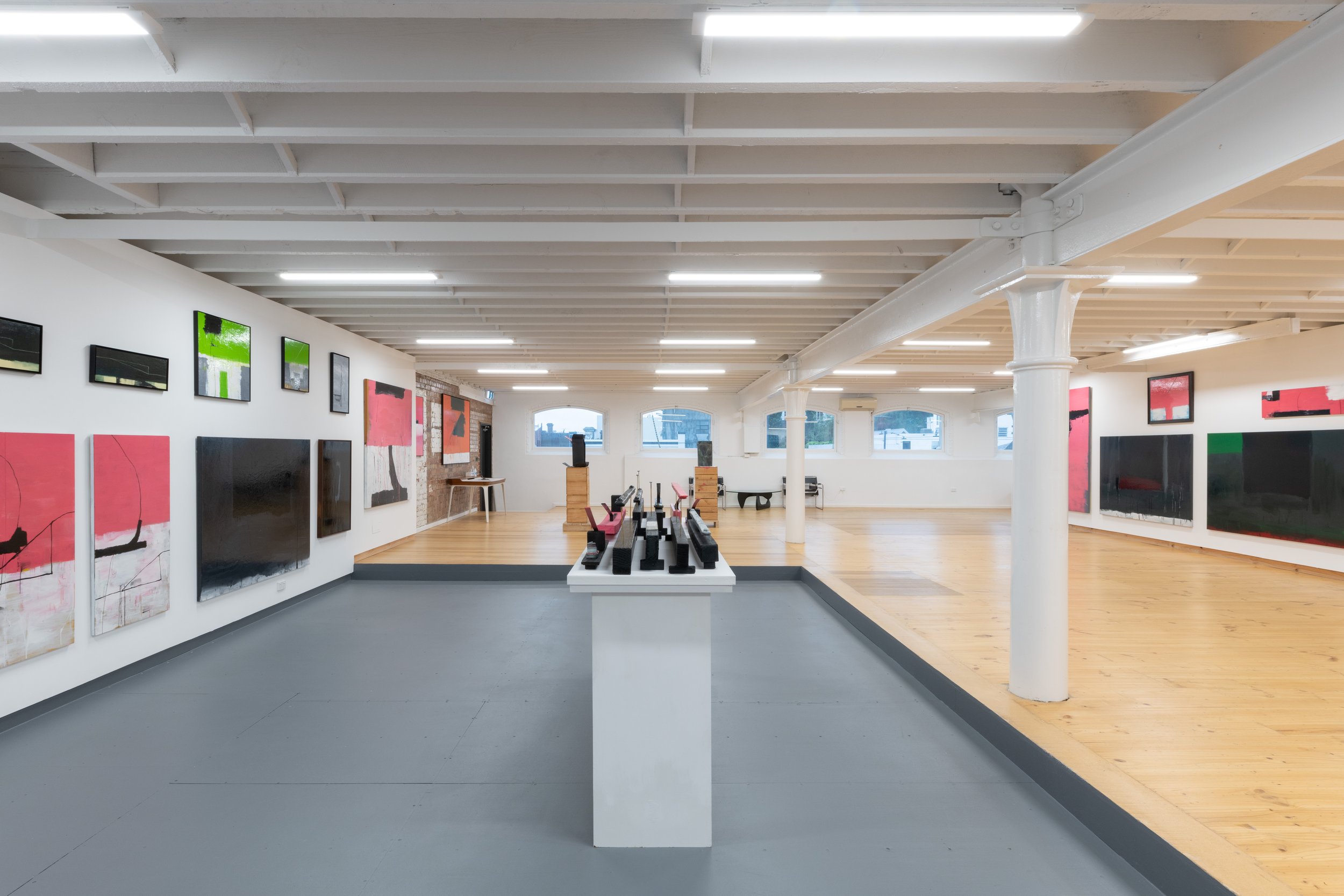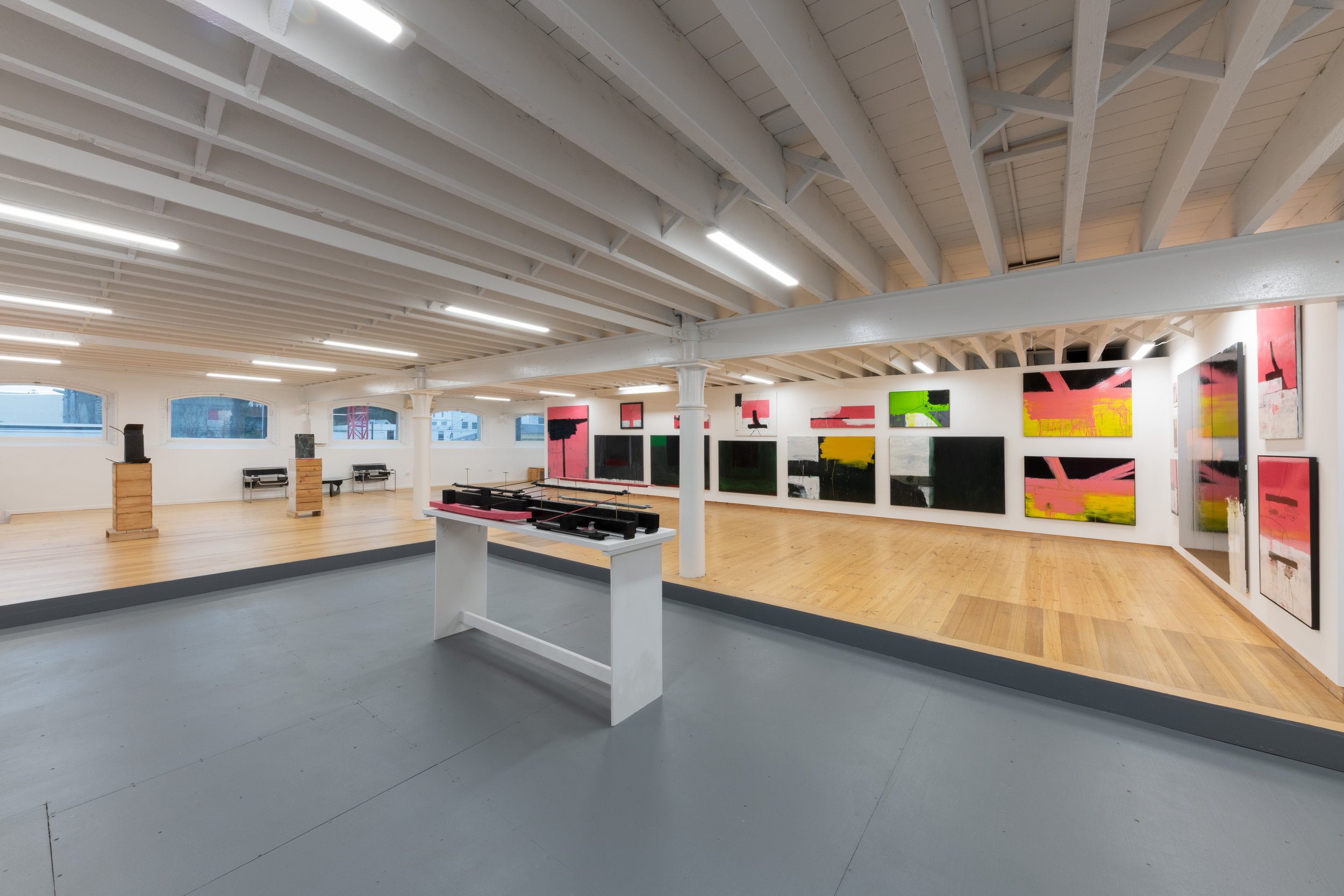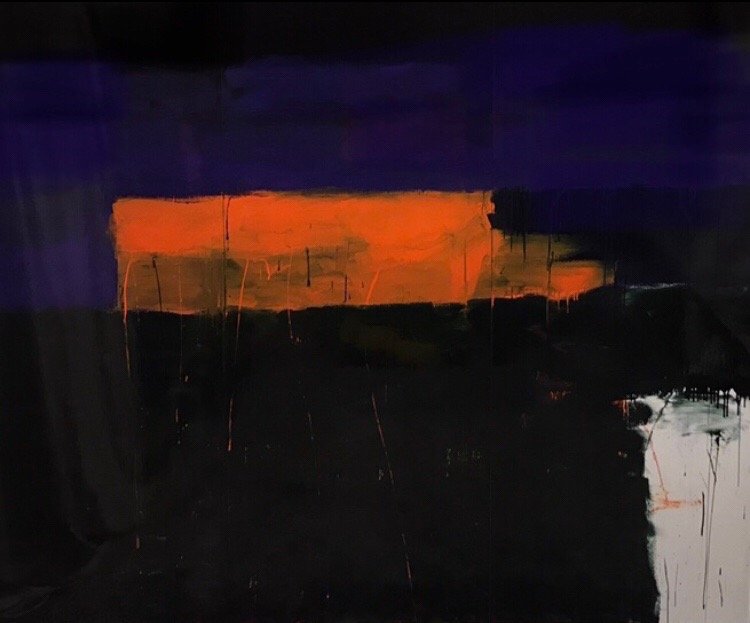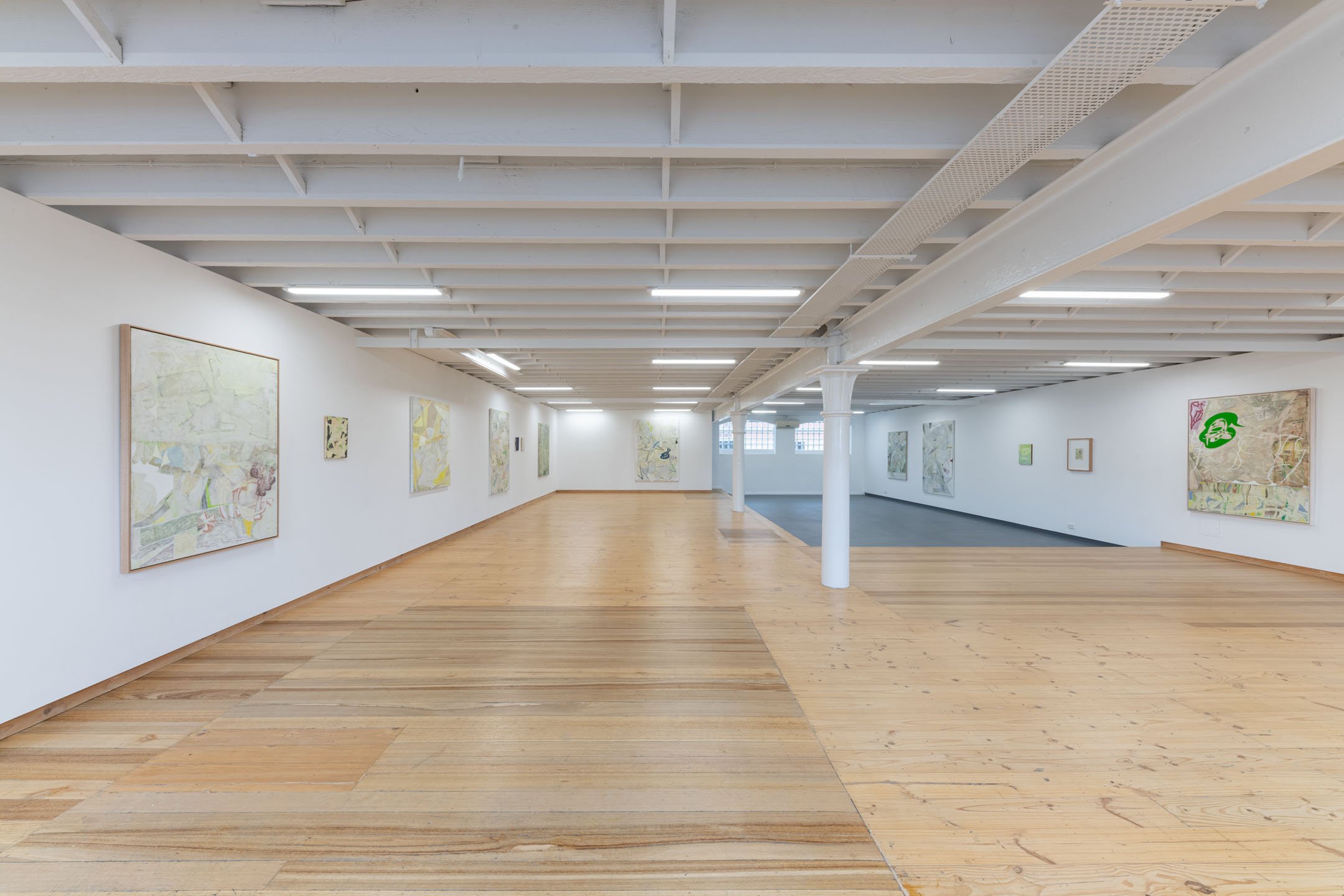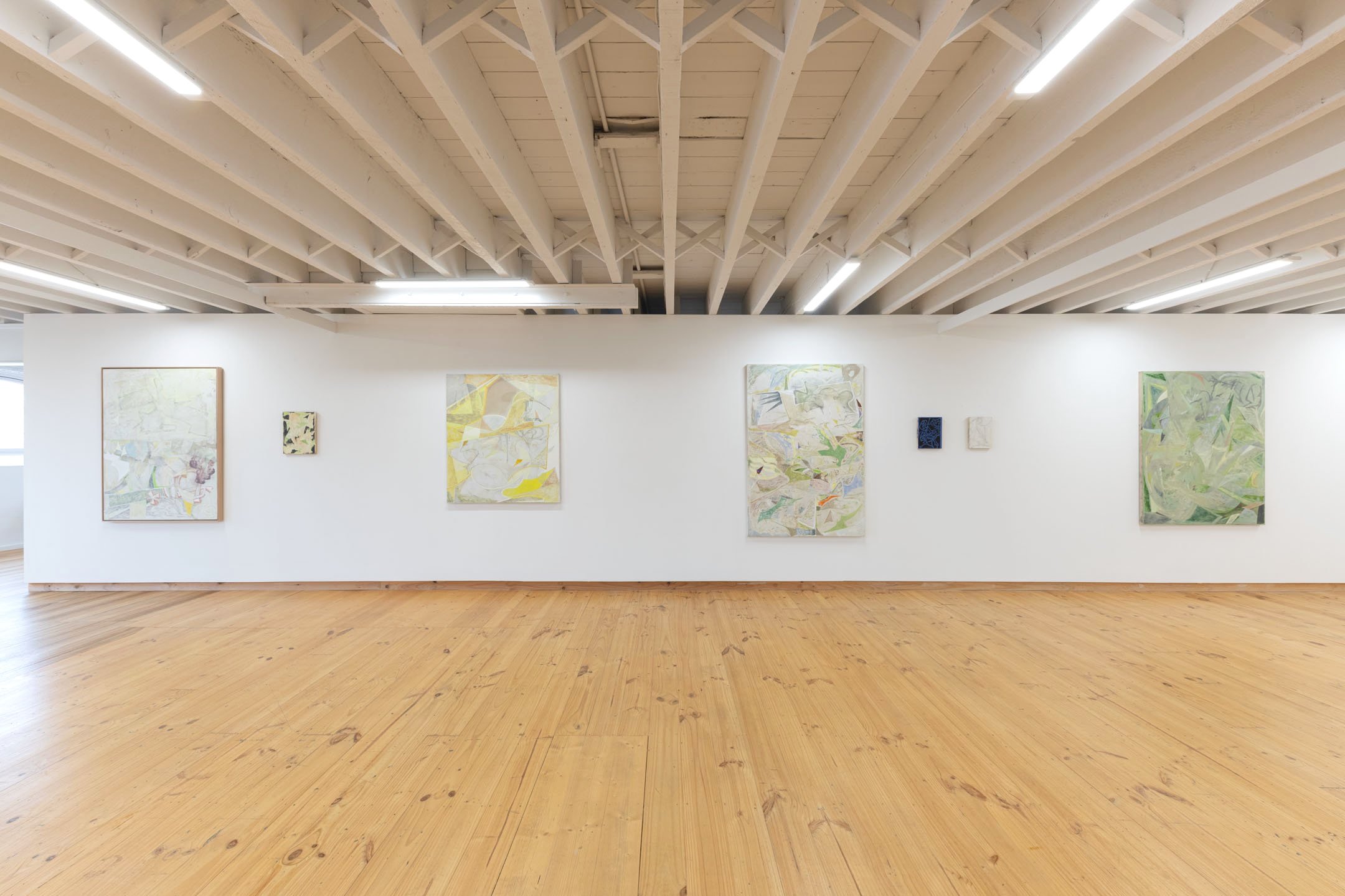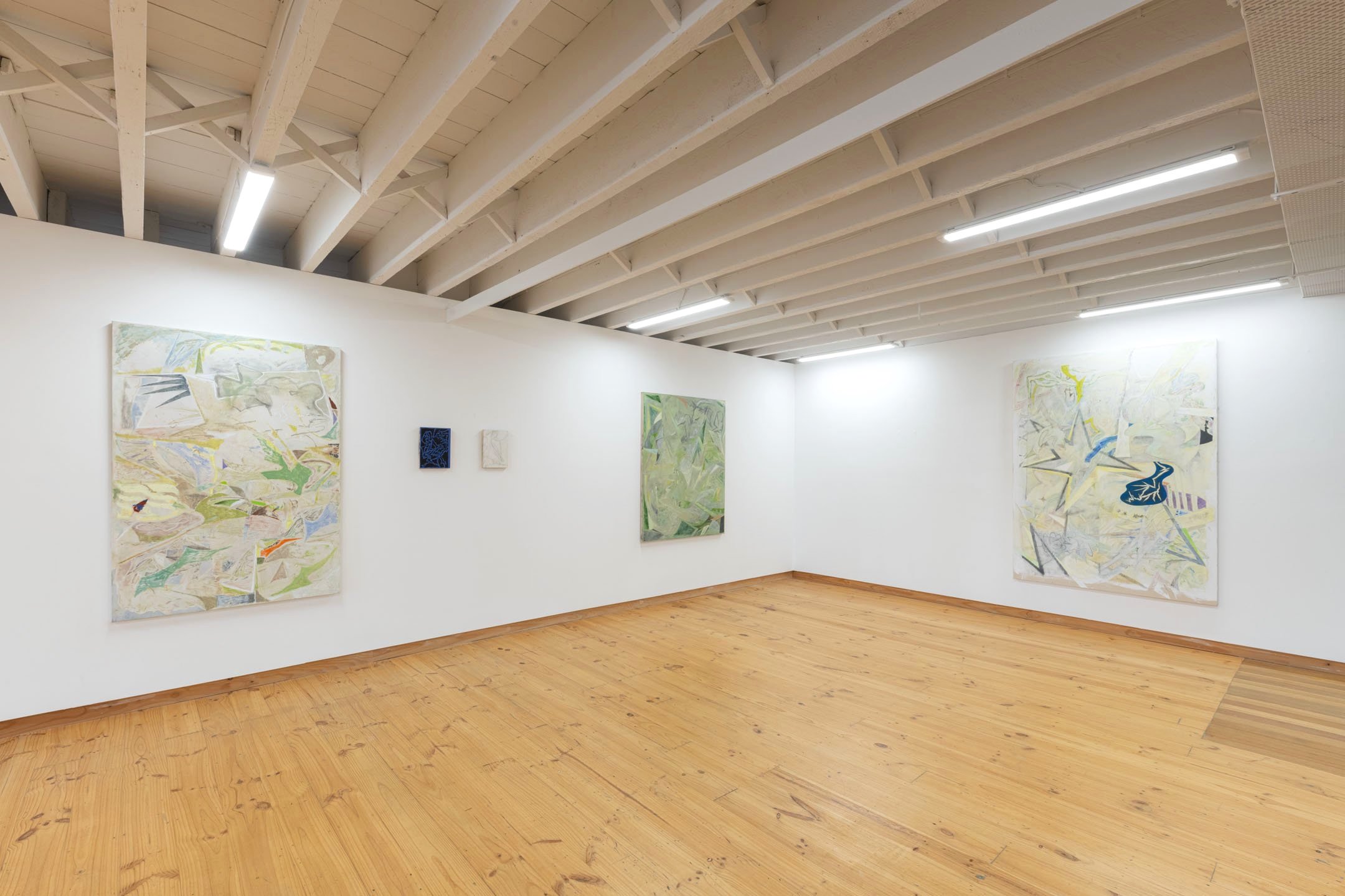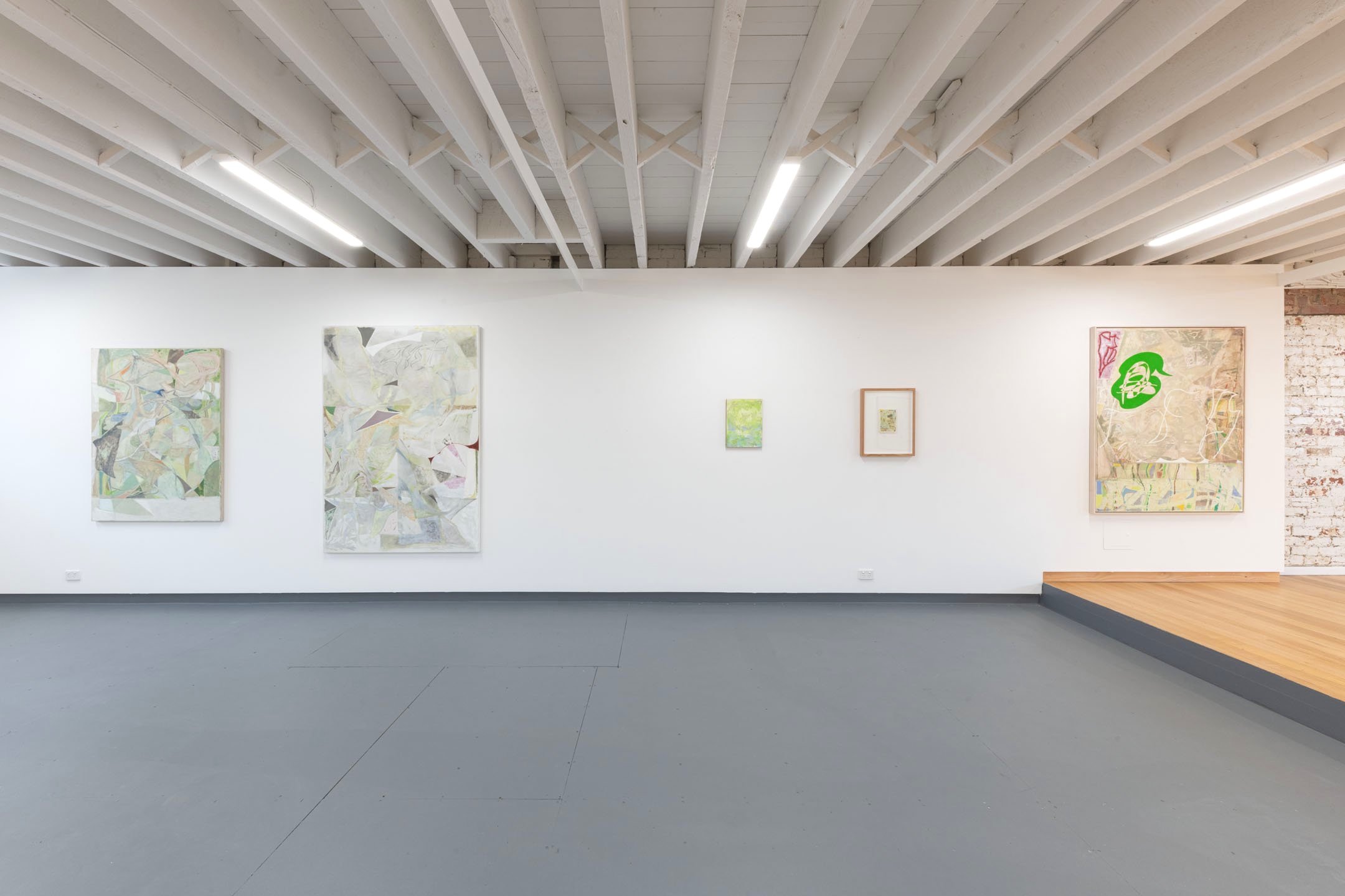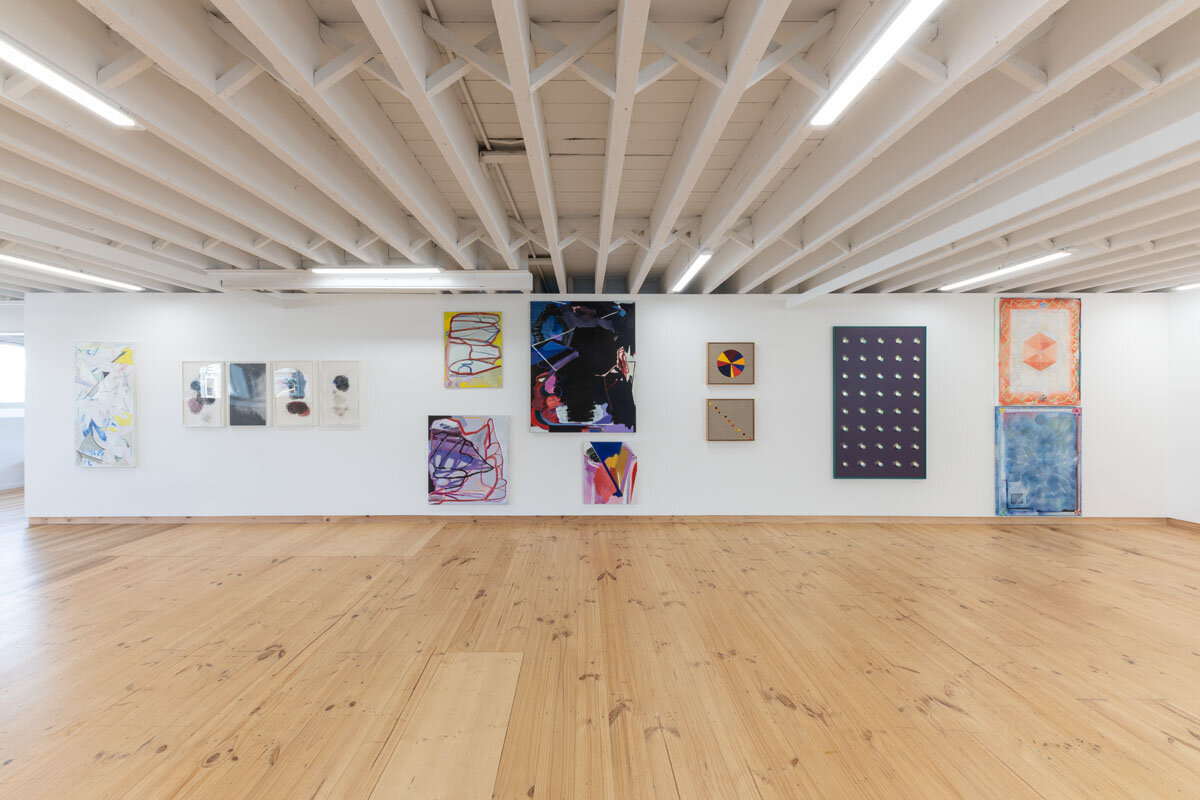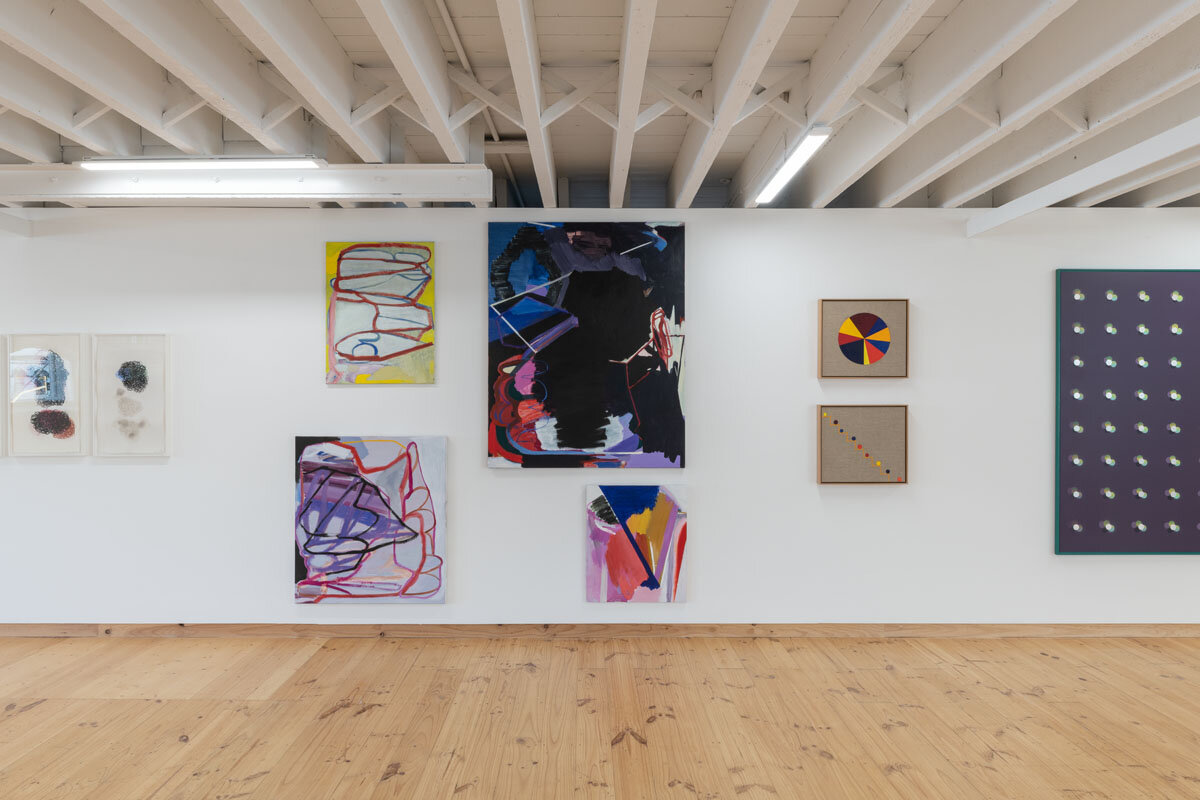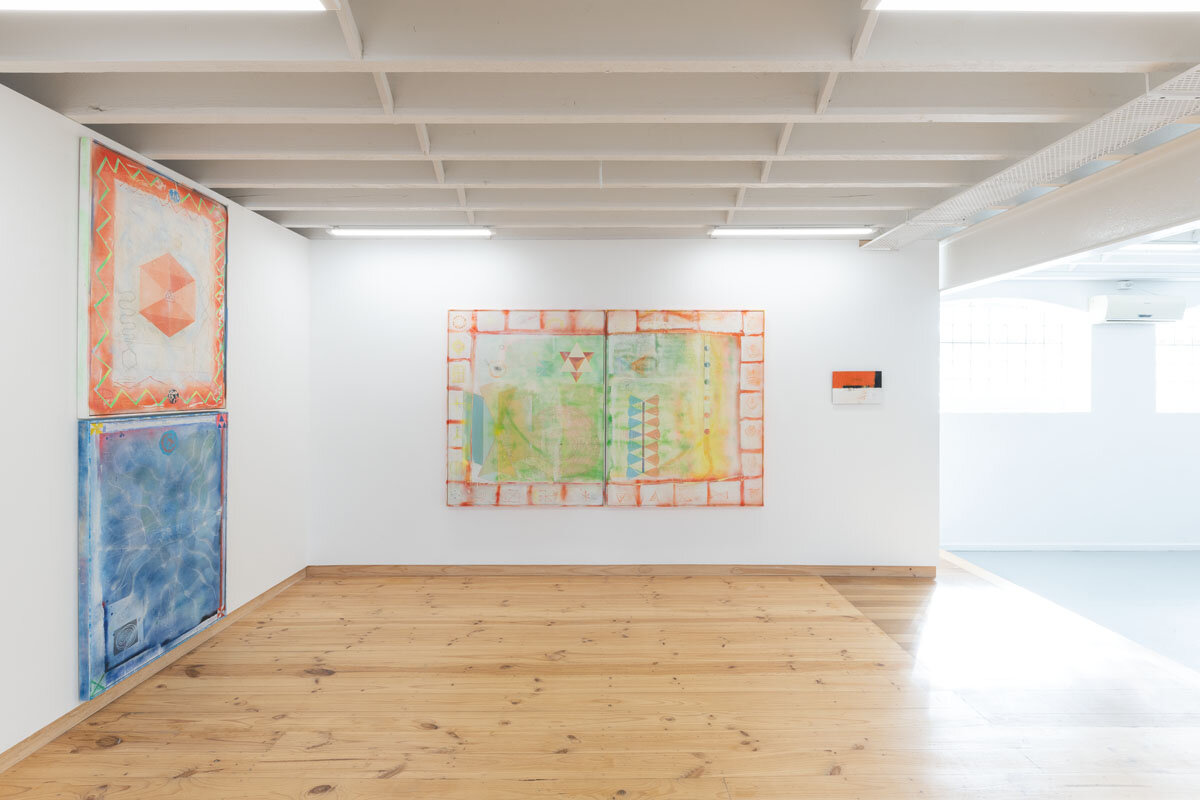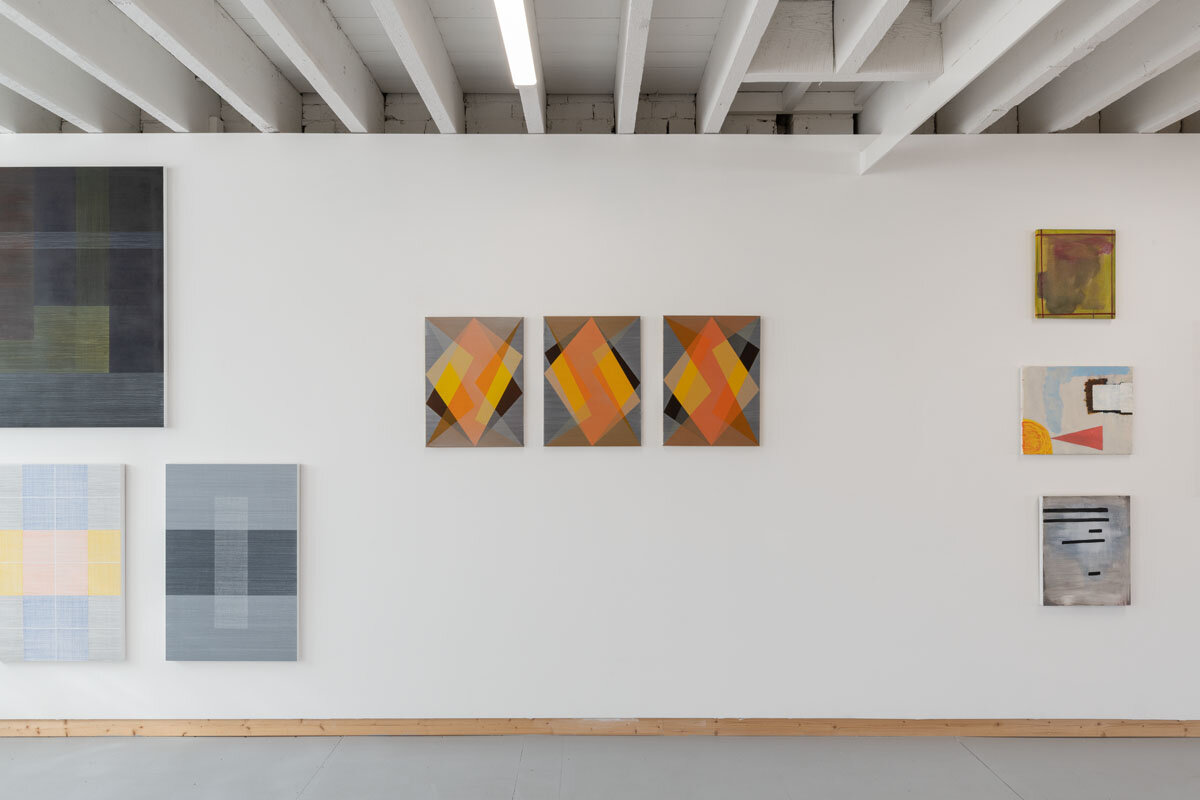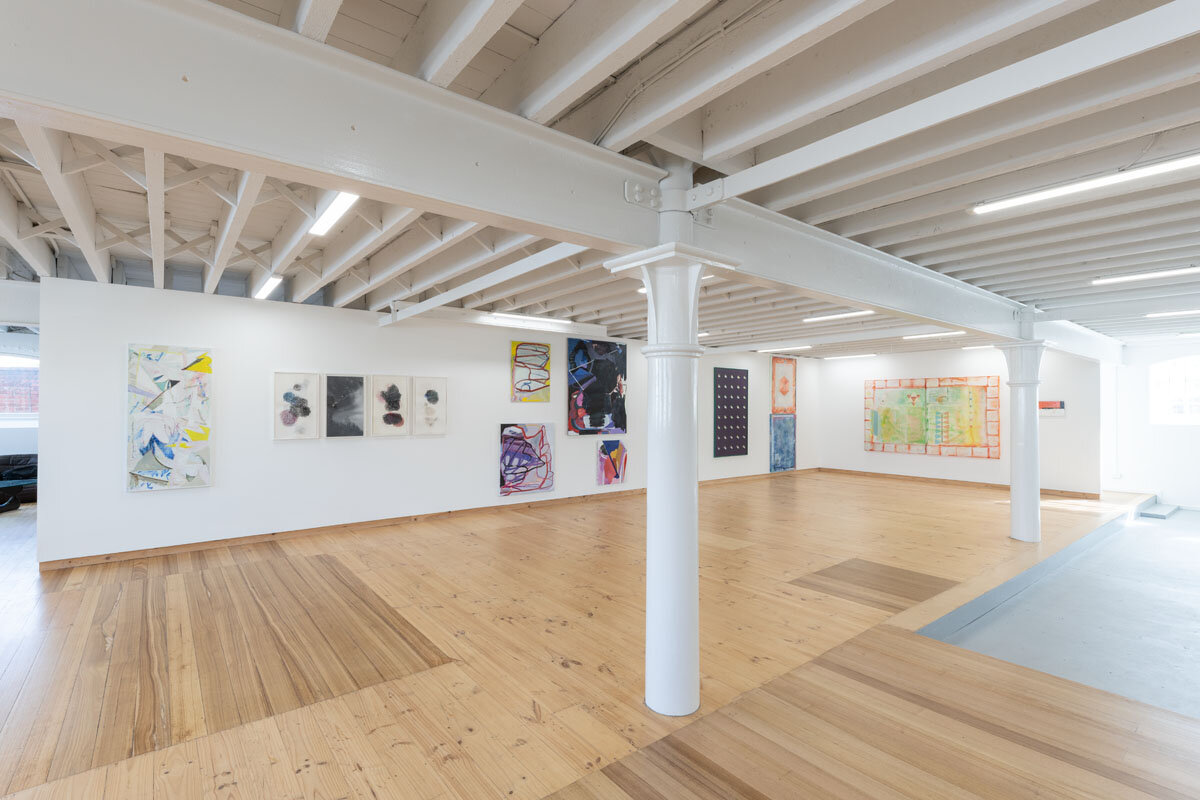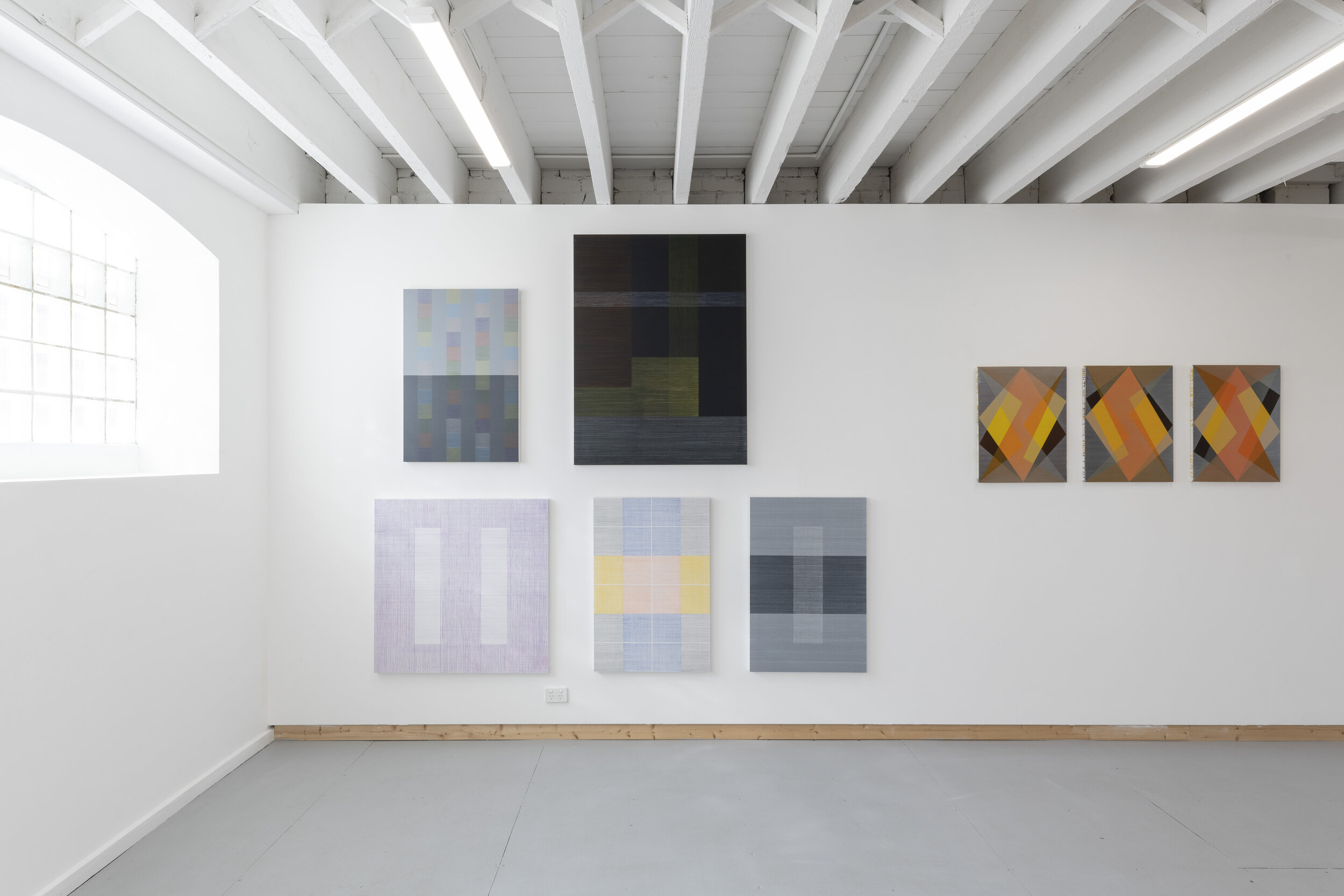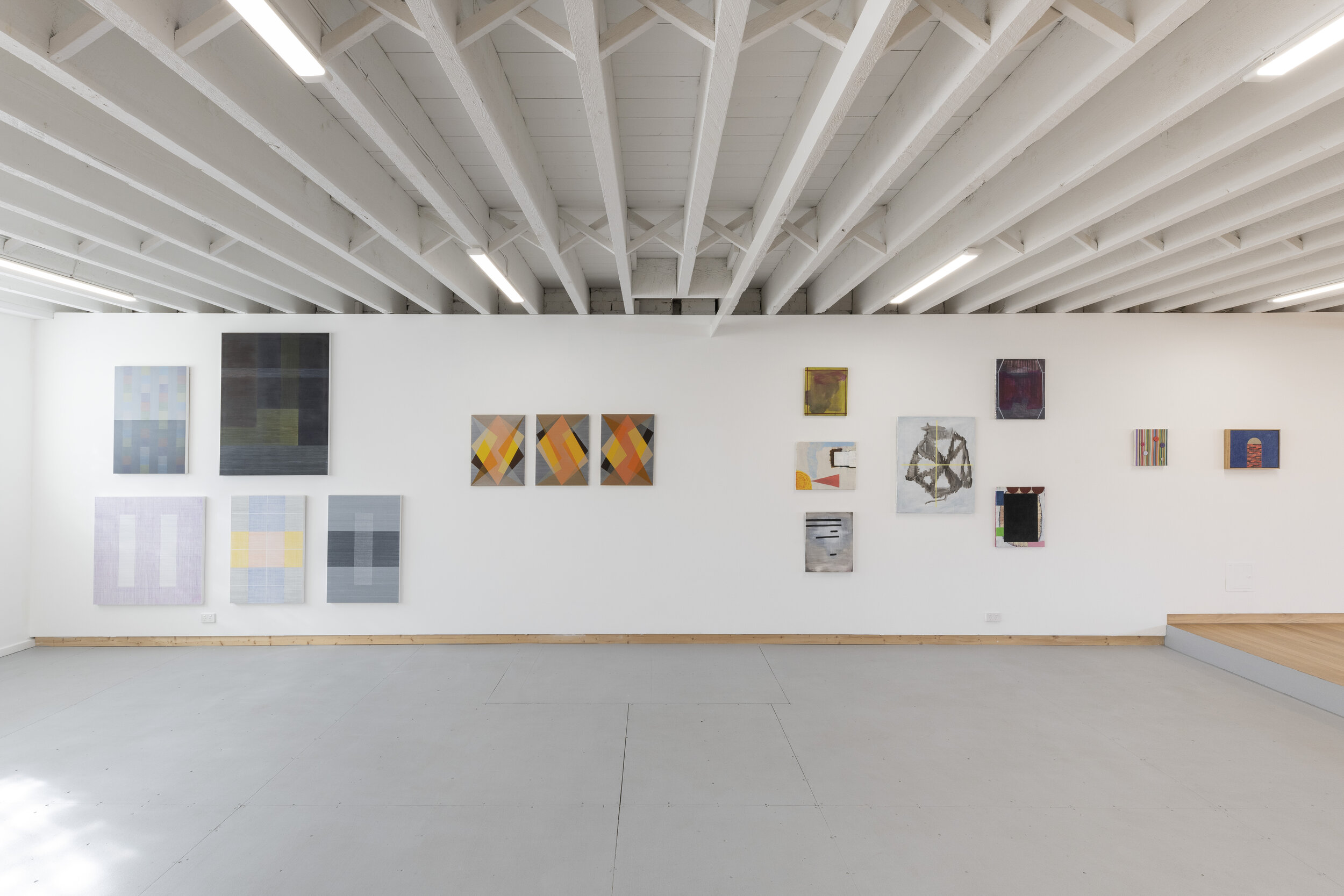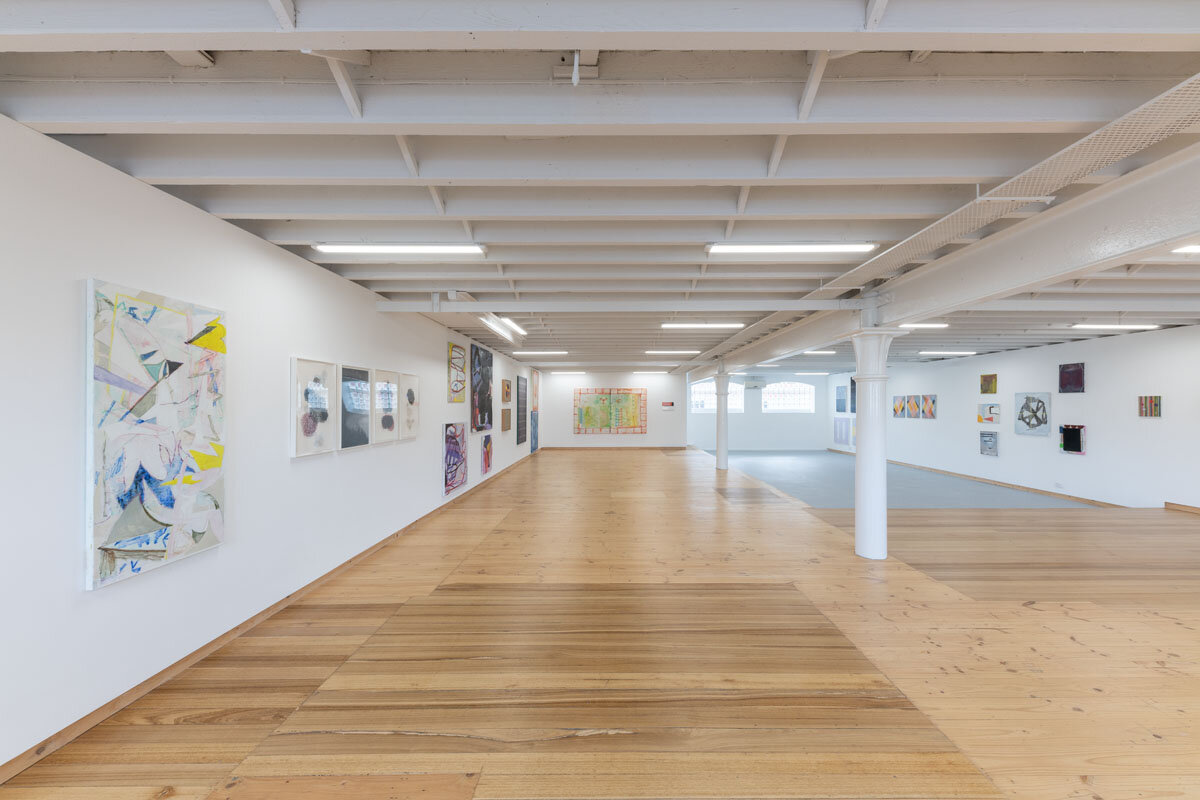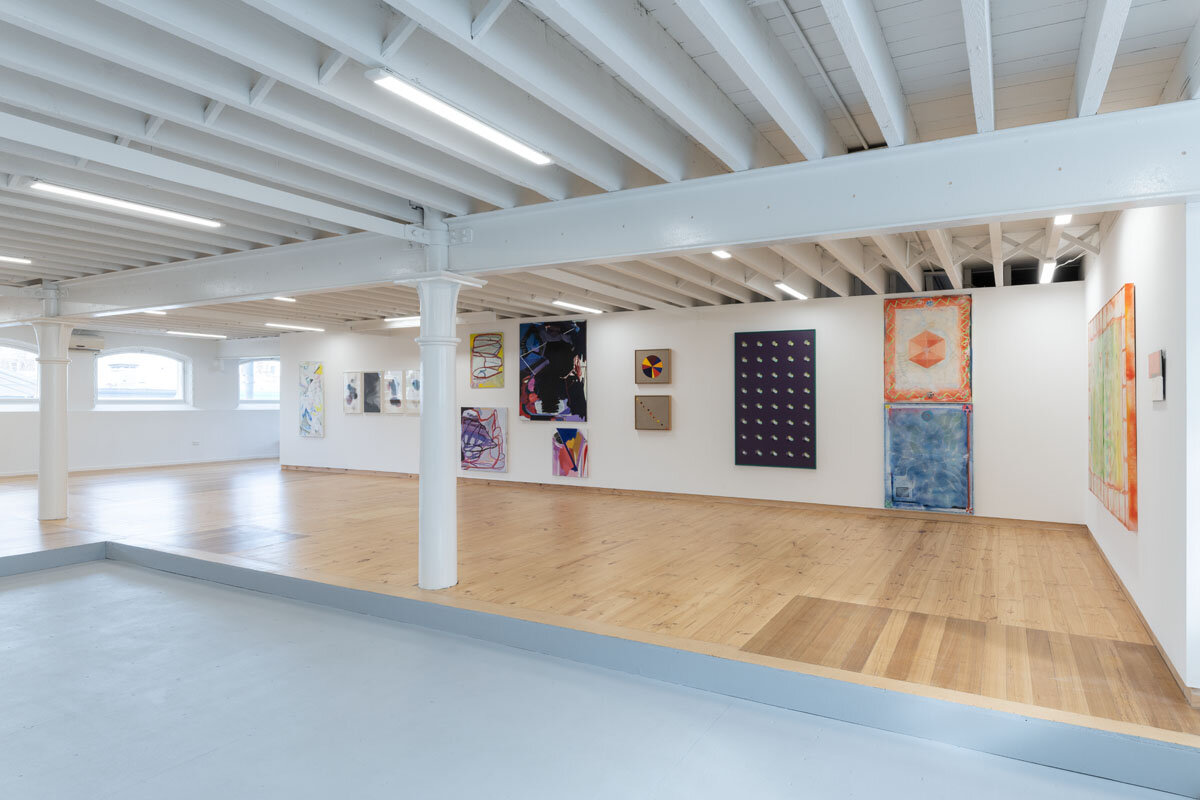stephen eastaugh: ID (SOMEWAYS SEARCHING SOMEWHERE TO SOMEHOW SEE SOMETHING OR SOMEONE FOR SOMETIME) SERIES
Stephen Eastaugh
22.04.22-14.05.22
Installation images, Stephen Eastaugh; ID (Someways Searching Somewhere to Somehow See Something or Someone for Sometime.) Series. Blockprojects, 2021. Photography: Simon Strong
ID = Identification. Any official document with your name and photograph or other information on it that you use to prove who you are.
ID = In psychoanalysis the ID is the deepest part of the unconscious mind that represents the most innate human needs and emotions such as hunger, joy, lust and anger.
ARTIST STATEMENT
This collection of documents documents a portion of my physical and conceptual passage of mostly safe conduct between the years 1982 and 2016. Eighty-four pages of expired Australian passports have been torn from the history of my extensive wander-lusting across seven continents and many oceans. A stray psycho-geographical flavour is found in this ID series as it playfully meanders over imagined and administered landscapes both urban and extremely remote in order to locate new vantage points.
I construct a visual travelogue with the visas, stamps, scribbles, dates and signatures of officialdom alongside my own organic vistas, marks, stitches, stains and attachments. A panoramic work connecting each scene via a single undulating horizon line which suggests a constant and steady drifting across longitudes and latitudes. Pages peppered with bureaucratic ink, topographical lumps, waves, clouds, pools, rocky terrains and a babble of foreign languages all paving the way to elsewhere.
An elongated wondering title, textured hills, watermarks, miniature but expansive views, human scribbles, exotic symbols and decades of my registered global pilgrimage clearly display an unsettled and unrelenting desire for travel. Humans have a basic need to move and that fact I have passionately embraced. I am hard-wired with a lust for a journey. All I need is a passport.
Passports are basically identification papers based on an ancient British document issued way back in 1414 so for over five hundred years fancy inscribed paper sheets have been in the luggage of lucky travellers. After the first world war the little blue, green or red passport booklet that we all recognise began to be used by anyone legally travelling internationally. I have managed to fill many passport pages with data and assorted official marks that have enabled me to cross hundreds of borders, to state where I have been and to prove that I am who I am.
These sheets of formal abstracted paperwork combined with my own informal physical legwork has made searching somewhere someway somehow to see something or someone for sometime very real, often surprising and the views have always been somewhat worthwhile.
ARTWORKS:
enquire.
vivian cooper smith: losing ground
Vivian Cooper Smith
03.03.21-26.03.22
Installation images, Vivian Cooper Smith; Losing Ground . Blockprojects, 2021. Photography: Simon Strong
Vivian and I share an unusually similar background (ask us about it sometime it is scary in the details how similar). We were both raised in families who followed a strong belief system. A system that gave hard edges to understanding life based around and through the idea of death. So, it was probably no surprise that we both ended up working with a medium – photography – that arguably carries with it the parallels to this belief system. To believe in this photographic system though one has to be blind to the ground – to the medium.
The ground of the image, within painting, is understood as that which can’t be seen but forms the base of the image. In photography arguably the medium itself is the equivalent. It is overlooked for its ability to represent. That the medium is transparent though, is a myth, “a bit of bourgeois folklore” that perpetuates the ideology of control/ownership/power. Understanding this, Vivian’s work brings the ground – the medium – to the forefront to allow him to ask questions of hard edges, of certainty. His aporetic methods of working are used to try and find something as much through what-it-is-not as with what-it-is.
Through his work it seems to me that Vivian wants to expose the ground to make our belief unstable. To ask questions for himself and allow us to ask questions too. Vivian upends the representation relationship of figure-ground creating a space of visual unsuredness. In so doing he also upends the myth of the medium as transparent ground. He brings it to the forefront. Refuting the representational understanding of the photograph to the point where his images can only be understood as the medium itself – photography. In this action of upending to expose (bad photography pun intended) that which is most often ignored or overlooked in photographs – the photography – Vivian challenges us to ask “what is a photograph”? To state a belief by allowing us to see the possibility of what it is not. Staking a firm position through instability.
Dr Kiron Robinson
Artist Statement
I travelled a lot as a kid. Many schools, different homes and friends all over. It was a unique upbringing but one that left a legacy. A feeling of ‘groundlessness’. I was always having to reorient myself to changing circumstances, new faces and places. Belonging takes time. When it happened it was by building relationships – softening the boundaries – so I wasn’t so obvious. Sometimes there wasn’t enough time and I remained the stranger.
I now accept this itinerant feeling and try and see it as a positive or generative one. When the measures of your identity are always shifting you have to work a bit harder to establish that core. You learn not to rely on externalities – people, places, things to provide that grounding. In a way, this is also how I approach photography. The photographs I make don’t tell you everything. They don’t tell a story or reveal a secret. When someone looks at an photograph I’ve made they are looking at the world through my eyes. It is a world built on transition and uncertainty where not everything has a place. Rather than something to be avoided though, this uncertainty holds the promise of new ways of seeing, of being.
ARTWORKS:
enquire.
james clayden: untitled series windows, memory & night - 36 paintings
James Clayden
27.01.22-20.02.22
Installation images, James Clayden, Untitled Series Windows, Memory & Night - 36 Paintings. Blockprojects, 2021. Photography: Simon Strong
ARTWORKS:
enquire.
JORDAN GRANT: IN THE BEGINNING A STAR, WHEN DRAWN WITH NAIL INTO BRICK, LOOKED AS FOLLOWS
Jordan Grant
08.12.21-22.01.22
Installation images, Jordan Grant; In The Beginning a Star, when Drawn with Nail into Brick, looked as Follows . Blockprojects, 2021. Photography: Simon Strong
JORDAN GRANT: IN THE BEGINNING A STAR, WHEN DRAWN WITH NAIL INTO BRICK, LOOKED AS FOLLOWS
Spaces of wordless immediacy
Thoughts on the painting practice of Australian artist Jordan Grant for his exhibition: In the beginning a star, when drawn with nail into brick, looked as follows.
Words, symbols, and signs can be unreliable. We like to think that language (written, verbal or aural) can be solid, but of course it’s equally sensory, vague, and general, forming though abstract and figurative idioms. Symbols and signs can seem objective, pointing to actions, objects, places, and atmospheres, but symbols are also subjective, and this influences our interpretation of them. Given this, one might say that meaning, from a semiotic vantage, is to various degrees contingent- a denotation as well as connotation. Language of any sort can never be a transparent tool for representing things, and particularly as it is the central mode through which to express power relationships¹.
Jordan Grant is acutely aware of the functions of language and signs as he makes contact in his paintings with what might best be described as an unfixed space full of emerging or retreating signs- a mixture of visual languages. The imagery appears to hold quauties that represent moments of arrival, where certain signs and shapes or the occasional abstruse word manifest within the work, while other elements seem to be embryonic. The paintings appear at times to have crystalised as a fragile and delicate moment- seemingly to have developed through workings that have simply solidified. At times the forms in his paintings are arcane, frail, delicate, dynamic, scrubby, even cancelled out. Most elements sit on the edge of meaning deferring any real singular clarity, so the paintings seem to be formed through the aim of avoiding lucid representations. They reside within a sensory realm of equivocality, a space that deliberately seems to sidestep being reduced to one thing or another.
In many ways this is in alignment with the notion expressed by art historian T.J. Clark, that elusive painting may be a ‘resistance’ or at least an ethical and political position in relation to the times². Clark’s reflection around elusiveness may indicate a way for painting to avoid being designated, leaving it open to expressing complexity and corresponding contradictions that exist within us, and the world within which we reside. Grant considers the specificity of language, signs, and symbols to be a type of bind between a desire for clarity and the problematic of unintentionally curtailing complex meanings. He seems to have decided that his paintings might just as well sift through unfixed idiosyncratic forms rather than deal with a fate of being classified as something too fixed. And that his ever-changing mutable works might form a valuable intermediary space within which to reflect personally and politically on the feelings of unfolding and ongoing complexities.
The paintings comprise changing transitions, shapes and signs that have been formed through searching and enquiry rather than pre-conception. He confesses to a suspicion around absolute ideas, preferring to escape the definable to arrive at moments of coalescence. This allows for subjectivity to be more at play, rather than tangible principles. He is drawn to French philosopher Jacques Ranciere’s idea of a .. wordless ambivalence in which the same procedures create and retract meaning, ensure and undo the link between perceptions, actions and affects. If there can be such a thing, this is the idea of a language forming visibly as a ‘wordless immediacy’s³.
The paintings communicate more than what we see, as they draw on the idea of our own unconscious mind and its changing moments. We also become aware that, to some degree, the artist has worked through an unconscious cognisance to unify metamorphizing imagery, as well as manage and preserve various fragmentary break-aways. Conversely to the free-flowing forms and shapes, the unification in these paintings is accomplished through analogous colours and reasonably structured compositions that often disclose one space revealing another. There is particularly a revealing or emergent awareness in the compositions where one section of a work may seem to lift, to reveal an interior or back space, evoking the very experience of a painting for the artist as it unfolds and materialises, where things are exposed while sections are layered over The painting’s imageries appear to adapt the idea of ongoing transformation, a type of reflexivity about thinking around making a painting, disclosing the notion that thinking in painting forms through unending constructions and reconstructions.
Theorist James Elkins considers that ‘thinking in painting is thinking as paint’4, where the artist is led by the pre-ordained physiognomies of paint as material. British artist Sonia Boyce refers to this as a ‘post intentionality’ in relation to production, implying that in working with paint an artist may simply assess the direction of a painting via the manner to which the paint unfoldss. In other words, even if determinism regulates an approach to painting, in thinking through painting an artist uncovers open and free actions through the interaction of their conscious/unconscious workings with the material. Paint as a substance is amenable, a resource for multiple ‘becomings’ carrying within it the internal conditions of inventiveness as well as the external limits of constraint. Paint carries within it the indeterminacy of substance as much as it holds energies that form as passages towards the merged implications of mind and matters. This is how, in painting, substances occupy the mind as a series of open and free acts. The experience of paint is always grasped in relation to the moving body, through a reciprocity involving the movement of one’s hand and the movement of material form. In this free- flowing working with paint, visceral combinations arise out of ‘wet into wet’ while subtle touches go together with dry, scabby scrapes and removals, and indeterminant daubs form into elucidations and recognitions within one’s cognisance.
Jordan Grant’s paintings might be considered as alternatives to absolute or definitive ideas in favour of a discourse about how things come about, how we can hold to multiple vantages where the outcome cannot be known, like the imagination. Perhaps the title of his exhibition suggests the difficulty of aiming for something intangible using the paltry tool of paint, the way that language can often be wanting, and earth bound.
Peter Westwood (Dr. Peter Westwood is an academic, artist and researcher living and working in Naarm I Melbourne)
Notes:
1. Foucault, M (1994) The Order of Things, New York: Random House.
2. HockdOrfer, A. and Kroner, T (eds). (2018). Jutta Koether- tour me Madame, Museum Brandhorst Bayerische Staatsgemaldesammlungen, Munich: Cologne: Verlag der Buchhandlung Walther Konig, p.243
3. Ranciere, J (2003) The Future of the Image, New York: Verso Books, p. 5.
4. Elkins, J. (1999) The object stares back: on the nature of seeing. Florida: Harvest, p. 113.
5. Fisher, E. and Fortnum, R. (2013). On the value of not knowing: wonder, beginning again and letting be. London: Black Dog Publishing, p. 78.
6. Coole, D. and Frost, D. (2010), New materia/isms: ontology, agency, and politics. Durham, North Carolina: Duke University Press. Grosz, citing Bergson,p. 150.
ARTWORKS:
enquire.
CANTO
31.08.19 - 14.09.19
Installation images, Canto. Blockprojects, 2019.
Blockprojects is proud to present, HOW SOON IS NOW,
an exhibition featuring fifteen contemporary artists who explore the mystery of abstraction.
ARTISTS:
Justin Andrews
Neil Keith Baker
James Clayden
Will Cooke
Jordan Grant
Denise Green
Melinda Harper
Julia Powles
Tom Vincent
David Wallage
what
